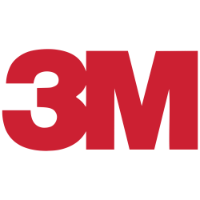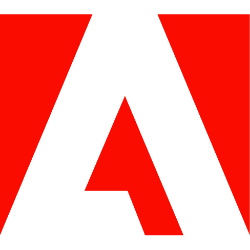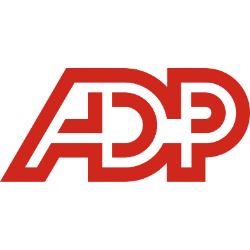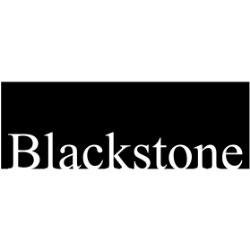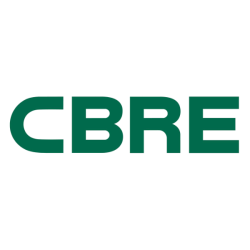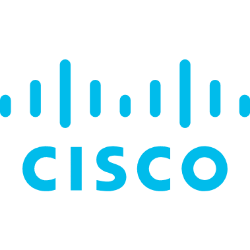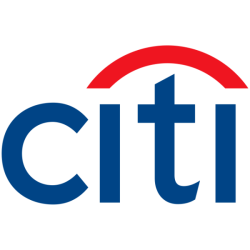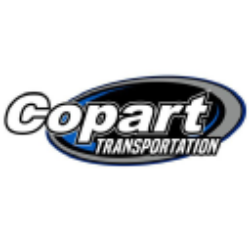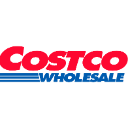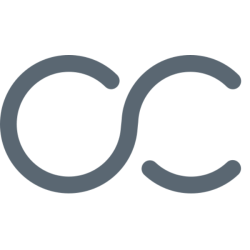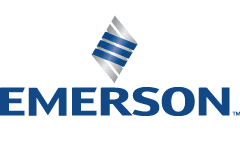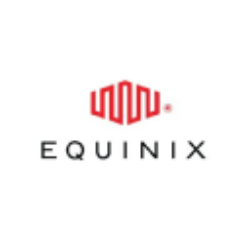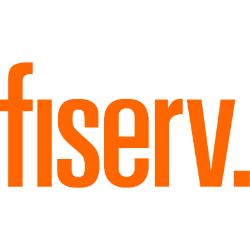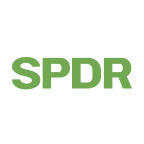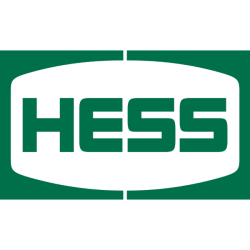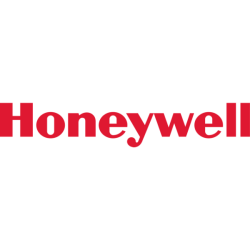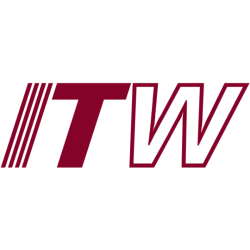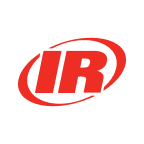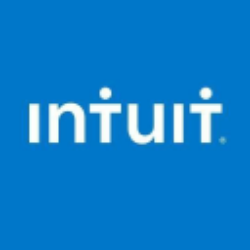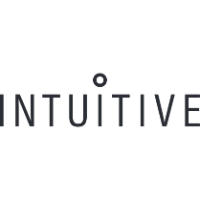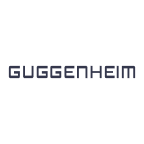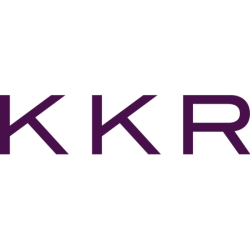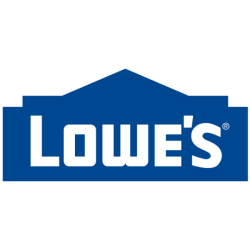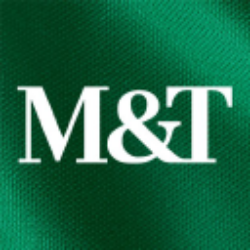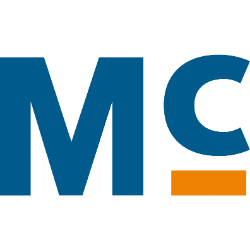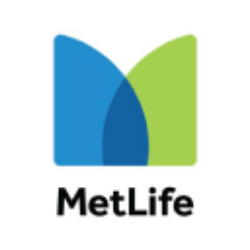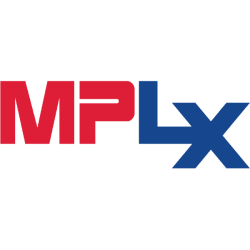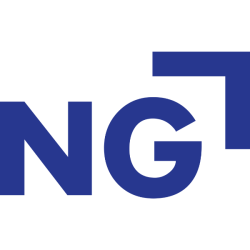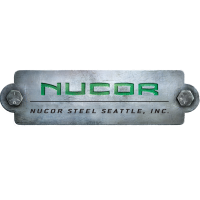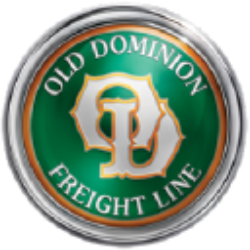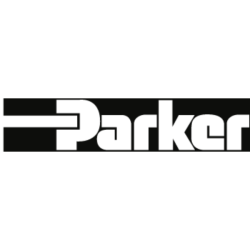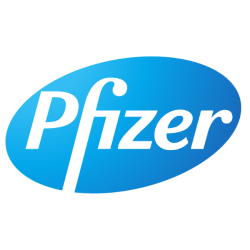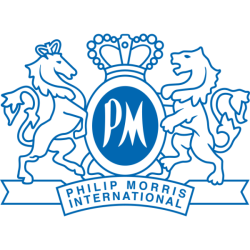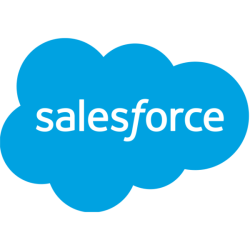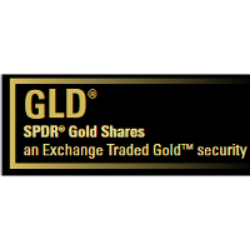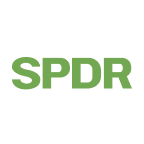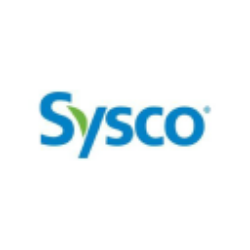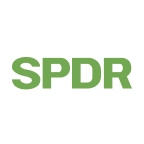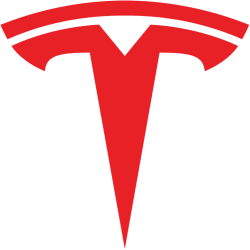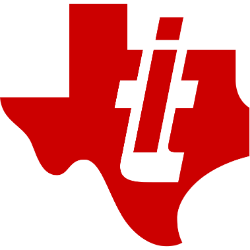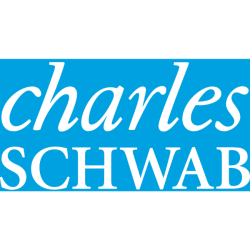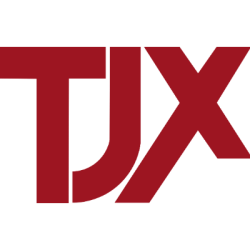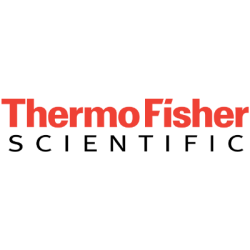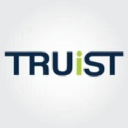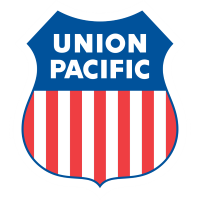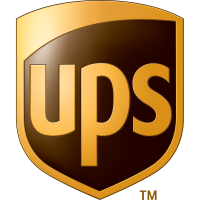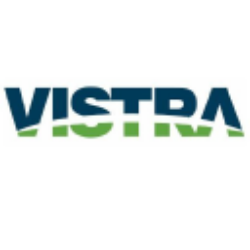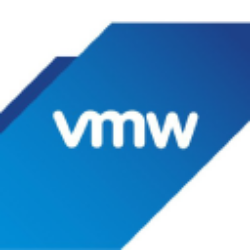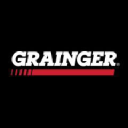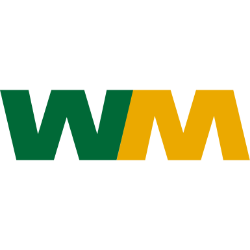Updated: June 7, 2025

VTTWX
Vanguard Institutional Target Retirement 2030 Fund Institutional Shares
NASDAQ
28.83
-0.24

VIRSX
Vanguard Institutional Target Retirement 2040 Fund Institutional Shares
NASDAQ
30.89
-0.36

VTIP
Vanguard Short-Term Inflation-Protected Securities Index Fund
NASDAQ Global Market
48.87
0.01
We have not found the stock you are looking for
Ticker
Loading
Market Cap
Loading
Revenue
Loading
EPS
Loading
PE Ratio
Loading
Volume
Loading
Dividend
Loading
Week Range
Loading
Beta
Loading
Frameworks
Name
Score
Company Overview
Loading
Sysco Corporation
Country
Loading
Founded
Loading
IPO Date
Loading
industry
Loading
Employees
Loading
CEO
Loading
Top News
Economic Moat Analysis
-
Analysis
-
Analysis
-
Analysis
-
Analysis
-
Analysis
-
Analysis
-
Analysis
-
Analysis
-
Analysis
-
Analysis
-
Analysis
-
Analysis
-
Analysis
-
Scoring
- Information
1. 10Y Growth Analysis
Score: 8.3 (Strong)
The overall score reflects SYY's steady growth trajectory, driven by strategic market expansion, technological enhancements, and a strong commitment to sustainability. The company is well-positioned to capitalize on emerging trends and maintain a competitive edge in the global food distribution industry.
2. Scenario Analysis
Score: 6.5 (Balanced)
Sysco demonstrates moderate resilience across scenarios, with strengths in regulatory adaptation and market expansion, but vulnerabilities in economic downturns and competitive pressures. Score without stress scenario: 6.7 – Mixed
3. Risk & Opportunities
Score: 6.7 (Balanced)
The overall score reflects a balanced environment of risks and opportunities for SYY. While supply chain issues and regulatory hurdles pose challenges, the company's expansion into new markets and technological advancements offer significant growth prospects.
4. Economic Moat
Score: 8.0 (Strong)
Sysco demonstrates a strong economic moat with significant cost advantages and efficient scale. Its brand recognition and proprietary technology further bolster its competitive position. Although network effects and switching costs are relatively narrower, they still contribute positively to the company's overall strategic posture.
5. Business Model
Score: 8.0 (Strong)
Sysco Corporation boasts a strong business model with its extensive product offerings, robust distribution network, and focus on customer satisfaction. While the model is effective, ongoing investments in technology and sustainability are essential to maintaining competitive advantage.
6. Management Analysis
Score: 8.3 (Strong)
Sysco Corporation's management team is competent, demonstrating strong leadership and strategic vision. The company excels in leadership stability and strategic direction, with a solid record in expanding market presence and embracing innovation. While there are areas for improvement in innovation, Sysco's proactive approach to technology and customer trends positions it well for future growth.
7. BCG Matrix
Score: 8.0 (Strong)
Sysco demonstrates a strong position in its core business areas, particularly food distribution and digital solutions, which supports its overall high score. However, challenges in sustainability initiatives and international expansion present areas for strategic improvement.
8. SWOT Analysis
Score: 7.4 (Strong)
Sysco's strengths, particularly its market leadership and robust distribution network, position it well in the foodservice industry. While there are challenges related to operating costs and industry reliance, Sysco's opportunities in emerging markets and sustainable practices offer promising growth potential.
9. Porter's 5 Forces
Score: 5.7 (Balanced)
The overall score reflects a moderately competitive environment for Sysco, with particular challenges in supplier and buyer power. However, strong brand loyalty and established networks provide some insulation against competitive pressures.
10. PESTLE Analysis
Score: 7.1 (Strong)
Sysco Corporation is well-positioned with mostly positive impacts from political, technological, and environmental factors, although economic and legal challenges present balanced risks and opportunities.
11. ESG Analysis
Score: 7.5 (Strong)
The overall score reflects Sysco's good performance across most ESG criteria, with particular strengths in social and governance areas. While the company demonstrates solid initiatives in environmental practices, there is room for improvement, especially in comprehensive implementation and impact measurement.
12. Company Milestones
Score: 7.2 (Strong)
No summary available.
Final Overall Score
Score: 7.5 (Strong)
The Final Overall Score of 7.5 for the stock ‘SYY’ suggests a strong performance with positive attributes and a favorable outlook. Here’s a concise explanation based on the score: 1. **General Performance**: The score indicates that ‘SYY’ has consistently demonstrated solid performance metrics. This could include stable revenue growth, profitability, and efficient operations. The company’s ability to maintain or improve market share might also contribute to this score. 2. **Strengths**: Key strengths likely contributing to the score might include a robust financial position, effective management strategies, and competitive advantages such as a strong brand or market presence. Operational efficiency and innovation could also be factors. 3. **Outlook**: The outlook for ‘SYY’ appears promising, as suggested by the score. This may be due to favorable industry trends, strategic expansions, or product/service diversification. Investor confidence might be high, expecting continued growth and returns. Overall, the score of 7.5 reflects a balance of current achievements and future potential, positioning ‘SYY’ as a strong contender in its sector.
Future Outlook
To provide a future outlook for Sysco Corporation (stock symbol: SYY), it’s important to consider several key factors, including financial performance, industry trends, and macroeconomic conditions. Here’s a concise overview: 1. **Financial Performance**: Sysco has historically shown solid financial performance with consistent revenue growth and profitability. Keep an eye on quarterly earnings reports for any significant changes in revenue, profit margins, and cost management, as these will directly impact the stock’s performance. 2. **Industry Trends**: As a leading foodservice distributor, Sysco’s performance is closely tied to the health of the restaurant and hospitality industry. Post-pandemic recovery in these sectors could positively impact Sysco’s sales. Additionally, trends towards home delivery and digital ordering could provide new growth opportunities. 3. **Supply Chain and Inflation**: Global supply chain disruptions and inflationary pressures can affect Sysco’s cost structure and pricing strategies. The company’s ability to manage these challenges and maintain supply chain efficiency will be critical. 4. **Sustainability and ESG Initiatives**: Increasing focus on sustainability and ESG (Environmental, Social, and Governance) practices can influence investor sentiment. Sysco’s efforts in these areas could enhance its reputation and attractiveness to socially conscious investors. 5. **Macroeconomic Factors**: Broader economic conditions, including consumer spending, interest rates, and employment levels, will influence Sysco’s market environment. A stable or growing economy would likely support better performance. Overall, Sysco’s future outlook appears cautiously optimistic, but it will be contingent on its ability to navigate ongoing challenges and capitalize on industry trends. Investors should stay informed about developments in these areas to make well-rounded investment decisions.
3-Year Growth Prospects
Score: 7.5 Steady
– Expansion in Key Markets: SYY is focusing on expanding its presence in high-growth markets to boost revenue.
Example: *Recent acquisition of a regional distributor in Southeast Asia to tap into emerging markets.*
– Innovation in Product Offerings: The company is enhancing its product portfolio to cater to evolving consumer preferences.
Example: *Introduction of plant-based food products to align with increasing demand for sustainable options.*
– Efficiency Improvements: Investment in logistics and supply chain technologies to reduce operational costs.
Example: *Deployment of AI-driven inventory management systems to optimize stock levels and reduce waste.*
– Strategic Partnerships: Forming alliances with leading food tech companies to drive innovation.
Example: *Partnership with a tech startup to develop smart kitchen solutions for commercial clients.*
– Sustainability Initiatives: Commitment to reducing carbon footprint through sustainable sourcing and packaging.
Example: *Implementation of renewable energy solutions across distribution centers to lower emissions.*
5-Year Growth Prospects
Score: 8.2 Steady
– Global Market Penetration: Continued focus on expanding international operations to diversify revenue streams.
Example: *Establishment of new distribution hubs in Europe and Latin America to increase market share.*
– Technological Advancements: Investment in digital transformation to improve customer experience and operational efficiency.
Example: *Launch of a customer portal with real-time tracking and ordering capabilities.*
– Product Diversification: Broadening product range to include health-focused and specialty items.
Example: *Expansion of organic and gluten-free product lines to cater to health-conscious consumers.*
– Talent Acquisition and Development: Strengthening workforce capabilities through strategic hiring and training programs.
Example: *Initiatives to attract top talent in supply chain management and food technology.*
– Resilience Building: Enhancing risk management strategies to mitigate market volatility.
Example: *Development of a robust supply chain contingency plan to handle disruptions.*
10-Year Growth Prospects
Score: 9.0 High
– Leadership in Sustainability: Aiming to become a leader in sustainable practices within the industry.
Example: *Pledge to achieve carbon neutrality by 2035 through comprehensive sustainability initiatives.*
– Innovation-Driven Growth: Emphasis on R&D to drive long-term growth through innovative solutions.
Example: *Investment in a food innovation center to develop future-ready products and technologies.*
– Market Leadership: Targeting top position in the global food distribution market through strategic acquisitions.
Example: *Acquisition strategy focused on market leaders in key regions to consolidate industry position.*
– Digital Transformation: Full digital integration across operations to enhance efficiency and customer engagement.
Example: *Adoption of blockchain technology for supply chain transparency and traceability.*
– Community and Stakeholder Engagement: Building strong relationships with stakeholders to enhance brand reputation.
Example: *Collaborative initiatives with local communities to support sustainable food systems.*
Overall Score: 8.3/10
The overall score reflects SYY’s steady growth trajectory, driven by strategic market expansion, technological enhancements, and a strong commitment to sustainability. The company is well-positioned to capitalize on emerging trends and maintain a competitive edge in the global food distribution industry.
Future Outlook
SYY is poised for sustained growth over the next decade, supported by its strategic focus on innovation, market expansion, and sustainability. The company’s proactive approach to digital transformation and talent development will further strengthen its market position. By leveraging its strong foundation and embracing future opportunities, SYY is expected to achieve significant advancements in market leadership and sustainability goals, ensuring long-term value creation for stakeholders.
Scenario 1: Economic Downturn
Score: 6.5 – Mixed
– Reduced consumer spending: Sysco’s reliance on foodservice distribution makes it vulnerable to decreased consumer spending as restaurants cut back on orders.
*Example: During the 2020 pandemic, Sysco’s revenue dropped as foodservice demand plummeted.*
– Supply chain disruptions: Global supply chain issues could impact Sysco’s ability to procure and deliver products efficiently.
*Example: Recent port delays have led to increased lead times for food imports.*
– Lower investment in infrastructure: Economic downturns may lead Sysco to delay investments in logistics and distribution centers.
*Example: Sysco could postpone expansion projects due to budget constraints.*
– Increased competition for limited resources: Sysco might face higher prices and scarcity for essential goods needed for distribution.
*Example: Raw material shortages impacting packaging suppliers could affect Sysco’s operations.*
– Pressure on stock prices: Investor confidence may waver during economic downturns, affecting Sysco’s stock valuation.
*Example: Sysco’s stock price declined significantly during the 2008 financial crisis.*
Scenario 2: Technological Disruption
Score: 5.8 – Mixed
– Advancements in battery technology: Sysco’s fleet operations could benefit from improved battery technology, reducing operational costs.
*Example: Adoption of electric trucks for local deliveries could lower fuel expenses.*
– Autonomous driving technology: Potential for cost savings, but high initial investment could be a barrier for adoption.
*Example: Autonomous delivery vehicles could streamline logistics but require significant capital.*
– Energy storage solutions: Enhanced energy storage could reduce Sysco’s reliance on traditional energy sources.
*Example: Implementing solar panels with storage capabilities in distribution centers.*
– Integration of AI and machine learning: AI could optimize supply chain efficiency and demand forecasting.
*Example: Predictive analytics improving inventory management and reducing waste.*
– Expansion into new tech domains: Sysco may explore partnerships with tech firms to leverage new technologies.
*Example: Collaborations with logistics tech startups to enhance delivery systems.*
Scenario 3: Regulatory Changes
Score: 7.2 – Resilient
– Stringent emissions standards: Sysco’s commitment to sustainability aligns with stricter emissions regulations, potentially reducing penalties.
*Example: Investment in low-emission vehicles aligns with new regulatory standards.*
– Government incentives: Sysco can benefit from financial incentives for adopting green technologies.
*Example: Tax credits for energy-efficient equipment in distribution centers.*
– Changes in trade policies: Sysco’s diverse supplier base could mitigate some trade policy impacts.
*Example: Import tariffs may affect costs, but diversified sourcing provides flexibility.*
– Safety and data regulations: Compliance with new data protection laws may require investment but enhance customer trust.
*Example: Implementation of robust cybersecurity measures to protect customer data.*
– Support for renewable energy: Sysco can enhance its brand image and operational efficiency by increasing renewable energy usage.
*Example: Installation of solar panels in warehouses reduces carbon footprint.*
Scenario 4: Market Expansion
Score: 8.4 – Resilient
– Emerging markets: Sysco’s expansion into emerging markets offers growth opportunities despite potential risks.
*Example: Entry into the Asian market to tap into growing middle-class consumption.*
– Increased urbanization: Urban growth supports Sysco’s distribution model with more concentrated demand.
*Example: Expanding service in metropolitan areas to capitalize on urban dining trends.*
– Rising environmental awareness: Sysco’s sustainable practices align with consumer preferences for environmentally conscious brands.
*Example: Marketing campaigns highlighting sustainable sourcing and packaging.*
– Expansion of product portfolio: Diversifying product offerings to meet varied consumer needs enhances market position.
*Example: Introduction of plant-based products to cater to health-conscious consumers.*
– Strategic partnerships: Collaborations with local distributors and suppliers strengthen market presence.
*Example: Partnering with regional food producers to offer localized product lines.*
Scenario 5: Competitive Pressure
Score: 6.0 – Mixed
– Increased EV competition: Sysco’s logistics could face cost pressures from competitors adopting electric vehicles.
*Example: Competitors with EV fleets offering lower delivery costs could challenge Sysco’s pricing.*
– Technological advancements by competitors: Innovation among competitors could pressure Sysco to keep pace with technological developments.
*Example: Competitors using AI for enhanced customer service could erode Sysco’s market share.*
– Pricing pressure: Market competition may force Sysco to adjust pricing strategies to maintain competitiveness.
*Example: Price wars in the food distribution sector could impact profit margins.*
– Brand loyalty challenges: Sysco must innovate to maintain customer loyalty amidst growing competition.
*Example: Introduction of loyalty programs to retain restaurant clients.*
– Supply chain competition: Increased demand for efficient supply chains may intensify competition for logistics talent and resources.
*Example: Recruitment of skilled supply chain professionals becomes increasingly competitive.*
Scenario 6: Stress Scenario
Score: 4.9 – Mixed
– Severe economic recession: Sysco’s revenue could decline significantly, impacting financial stability.
*Example: Historical revenue declines during past recessions indicate vulnerability.*
– Major technological disruptions: Rapid tech changes could outpace Sysco’s adaptation capabilities.
*Example: Competitors adopting new tech faster could capture market share.*
– Extreme regulatory changes: Drastic regulations may impose unexpected costs and operational shifts.
*Example: Sudden changes in food safety laws requiring immediate compliance.*
– Significant market contraction: Reduced consumer spending could lead to decreased demand for foodservice supplies.
*Example: Decline in restaurant patronage during economic downturns.*
– Intense competitive landscape: Market consolidation could increase competitive pressure.
*Example: Mergers among competitors could create larger, more formidable rivals.*
Overall Score: 6.5/10
Sysco demonstrates moderate resilience across scenarios, with strengths in regulatory adaptation and market expansion, but vulnerabilities in economic downturns and competitive pressures.
Score without stress scenario: 6.7 – Mixed
Future Outlook
Sysco’s strategic positioning suggests potential for growth, particularly in expanding markets and sustainability initiatives. However, the company must remain vigilant in technological advancements and competitive dynamics to bolster resilience. Continued investment in innovation and diversification will be crucial for maintaining market leadership and navigating future challenges.
Risks
Score: 5.8 – Moderate
– Supply Chain Disruptions: Dependence on global suppliers exposes SYY to potential interruptions.
Example: *Recent geopolitical tensions have disrupted the supply chain, causing delays in delivery.*
– Rising Commodity Costs: Increased costs of raw materials can impact profit margins.
Example: *The surge in fuel prices has led to higher transportation costs.*
– Regulatory Changes: Stricter food safety and labeling regulations could increase compliance costs.
Example: *New health regulations requiring additional labeling have necessitated costly adjustments.*
– Market Competition: Intense competition from other food distributors and service providers.
Example: *Competitors have been offering aggressive pricing strategies, impacting SYY’s market share.*
– Economic Downturn: A weakened economy could reduce consumer spending and demand.
Example: *Recessionary pressures have led to a decline in restaurant patronage, affecting sales.*
Opportunities
Score: 7.5 – Strong
– Expansion in Emerging Markets: Opportunities for growth in underpenetrated regions.
Example: *SYY’s recent entry into the Asian market has opened new revenue streams.*
– Technological Advancements: Adoption of technology to streamline operations and reduce costs.
Example: *Implementation of AI-driven inventory management systems has improved efficiency.*
– Sustainability Initiatives: Increasing consumer demand for sustainable products offers growth potential.
Example: *Investment in eco-friendly packaging options has attracted environmentally conscious clients.*
– E-commerce Growth: Accelerated shift to digital platforms presents sales opportunities.
Example: *The launch of an online ordering system has significantly boosted customer engagement.*
– Product Diversification: Expanding product offerings can capture a broader customer base.
Example: *Introduction of plant-based products has appealed to health-conscious consumers.*
Overall Score: 6.7/10
The overall score reflects a balanced environment of risks and opportunities for SYY. While supply chain issues and regulatory hurdles pose challenges, the company’s expansion into new markets and technological advancements offer significant growth prospects.
Future Outlook
The future outlook for SYY is cautiously optimistic. While the company faces notable risks from external factors such as economic fluctuations and competitive pressures, its strategic initiatives in emerging markets and technology adoption provide a solid foundation for growth. Continued focus on sustainability and product diversification is likely to enhance brand value and customer loyalty. Monitoring economic conditions and adapting to regulatory changes will be crucial for maintaining a competitive edge.
Cost Advantages
Score: 8.0 Strong
– Economies of Scale: Sysco benefits from its large scale, allowing for bulk purchasing and better negotiating power with suppliers.
Example: Sysco’s extensive distribution network enables it to lower per-unit costs compared to smaller competitors.
– Operational Efficiency: Advanced logistics and supply chain management optimize costs.
Example: The company’s investment in technology for route optimization reduces transportation costs.
– Supplier Relationships: Long-term contracts with suppliers lead to favorable pricing.
Example: Sysco’s established relationships with major food producers provide cost advantages.
– Warehouse Optimization: Efficient warehouse operations decrease overhead costs.
Example: Automated warehousing systems improve inventory turnover rates, reducing storage costs.
– Cost Control Measures: Implementation of cost-saving initiatives across operations.
Example: Energy-efficient initiatives in warehouses and transportation cut utility expenses.
Network Effects
Score: 4.5 Narrow
– Customer Base: A vast network of clients leads to more business opportunities through word-of-mouth.
Example: Sysco’s presence in over 90 countries enhances its brand recognition and customer trust.
– Collaborative Partnerships: Partnerships with local distributors enhance service offerings.
Example: Sysco collaborates with regional distributors in various countries to expand its reach.
– Supplier Networks: Strong supplier networks provide a reliable supply chain.
Example: Partnerships with global suppliers ensure a steady flow of diverse products.
– Technology Integration: Online ordering systems create value for customers, enhancing retention.
Example: Sysco’s digital platforms improve customer experience and streamline ordering processes.
– Community Engagement: Local community engagement builds brand loyalty over time.
Example: Sysco’s community-focused initiatives support small local businesses, fostering loyalty.
Intangible Assets
Score: 7.5 Strong
– Brand Recognition: Sysco’s brand is synonymous with quality and reliability in food distribution.
Example: Consistently ranked as a top food service distributor, enhancing its reputation.
– Proprietary Technology: In-house technology for inventory and logistics management.
Example: Sysco’s proprietary systems improve efficiency and service delivery.
– Intellectual Property: Patents and trademarks on unique service offerings.
Example: Trademarked processes for food safety and handling create differentiation.
– Corporate Culture: Strong company culture attracts and retains top talent.
Example: Employee programs foster innovation and commitment, reducing turnover.
– Customer Relationships: Long-term contracts and relationships with key clients.
Example: Multi-year agreements with large restaurant chains stabilize revenue streams.
Switching Costs
Score: 6.0 Narrow
– High Dependency: Customers depend on Sysco for consistent quality and supply.
Example: Restaurants rely heavily on Sysco for timely delivery of essential ingredients.
– Customized Solutions: Personalized service offerings create customer stickiness.
Example: Sysco tailors its services to meet specific client needs, making switching less attractive.
– Integrated Systems: Clients integrate Sysco’s systems into their operations.
Example: Integration in clients’ supply chains increases the complexity of switching providers.
– Contractual Agreements: Long-term contracts with penalties for early termination.
Example: Contracts with significant clients include clauses that discourage switching to competitors.
– Loyalty Programs: Incentives for long-term clients enhance retention.
Example: Volume discounts and loyalty rewards reinforce long-term partnerships.
Efficient Scale
Score: 8.2 Strong
– Market Leadership: Dominance in the food distribution market in North America.
Example: As the largest food distributor, Sysco maintains a significant market share.
– Strategic Location: Distribution centers strategically located to optimize delivery times.
Example: Proximity to major urban centers allows faster service compared to competitors.
– Innovation in Distribution: Continuous improvement in logistics ensures efficient operations.
Example: Investing in automation and AI for distribution enhances service speed and reliability.
– Competitive Barriers: High entry costs deter new entrants in the industry.
Example: The need for a vast distribution network and technological infrastructure discourages new competitors.
– Resource Allocation: Efficient use of resources maximizes output and minimizes waste.
Example: Optimized fleet management reduces fuel consumption and operational costs.
Overall Score: 8/10
Sysco demonstrates a strong economic moat with significant cost advantages and efficient scale. Its brand recognition and proprietary technology further bolster its competitive position. Although network effects and switching costs are relatively narrower, they still contribute positively to the company’s overall strategic posture.
Future Outlook
Sysco’s strong economic moat positions it well to maintain its leadership in the food distribution sector. As it continues to leverage cost advantages and expand its efficient scale, Sysco is poised for sustainable growth. Future investments in technology and infrastructure will further enhance operational efficiencies, while ongoing efforts to strengthen customer relationships and brand recognition will support long-term stability.
Value Proposition
Score: 8.5 Strong
– Broad Product Portfolio: Sysco offers a wide range of food and related products, catering to diverse customer needs, ensuring strong market presence.
– Reliable Supply Chain: The company’s robust logistics infrastructure ensures timely delivery, enhancing customer satisfaction.
– Quality Assurance: Sysco’s commitment to high-quality products reinforces customer trust and loyalty.
– Innovative Solutions: Investment in technology-driven solutions, such as Sysco LABS, enhances operational efficiency and customer experience.
– Sustainability Initiatives: Focus on sustainable sourcing and operations aligns with increasing consumer demand for eco-friendly practices.
Customer Segments
Score: 8.0 Strong
– Restaurants and Foodservice: Major focus on independent restaurants, which form a significant portion of Sysco’s customer base.
– Healthcare and Educational Institutions: Provides specialized products tailored to the needs of these sectors.
– Hospitality Industry: Serves hotels and resorts, offering products that meet high-quality standards.
– Retail and Convenience Stores: Expands reach through partnerships with retail outlets.
– Diverse Demographics: Ability to cater to various cuisines and dietary requirements increases market penetration.
Revenue Streams
Score: 7.5 Strong
– Sales of Food Products: Primary revenue from the sale of a diverse range of food products.
– Non-Food Items: Revenue from non-food items such as tableware and cleaning supplies adds to the income stream.
– Value-Added Services: Services like menu planning and culinary support provide additional revenue.
– International Operations: Global presence, especially in Europe and Canada, contributes to revenue diversity.
– Growth in E-commerce: Online ordering systems enhance customer reach and convenience.
Channels
Score: 8.2 Strong
– Direct Sales Force: A large and experienced sales team ensures personalized service and customer retention.
– E-commerce Platforms: Online ordering and digital tools streamline the purchasing process for customers.
– Distribution Network: Extensive distribution centers enhance service efficiency and geographic reach.
– Customer Service Centers: Dedicated support centers address customer inquiries and issues promptly.
– Partnerships with Third-Party Distributors: Collaborations extend Sysco’s distribution capabilities.
Customer Relationships
Score: 8.0 Strong
– Personalized Service: Dedicated account managers foster strong customer relationships.
– Training and Support: Offers culinary training and support services to help customers maximize product use.
– Feedback Mechanisms: Regular surveys and feedback loops improve service quality and customer satisfaction.
– Loyalty Programs: Incentives and rewards programs enhance customer retention.
– Active Communication: Regular newsletters and updates keep customers informed about new products and services.
Key Activities
Score: 8.3 Strong
– Supply Chain Management: Efficient management of sourcing, procurement, and distribution.
– Product Development: Continual innovation in product offerings to meet market trends.
– Customer Engagement: Active customer relationship management enhances loyalty.
– Sustainability Practices: Implementation of eco-friendly practices in operations and sourcing.
– Technology Integration: Adoption of technology to streamline operations and improve customer experience.
Key Resources
Score: 8.5 Strong
– Extensive Distribution Network: A wide network of distribution centers ensures effective market coverage.
– Skilled Workforce: Experienced sales and customer service teams drive business growth.
– Strong Brand Reputation: Established brand trusted by customers worldwide.
– Technological Infrastructure: Investments in digital platforms and tools enhance operational efficiency.
– Financial Stability: Strong financial resources support strategic investments and growth initiatives.
Key Partnerships
Score: 7.8 Strong
– Supplier Relationships: Long-term partnerships with suppliers ensure product quality and reliability.
– Technology Partners: Collaborations with tech firms for digital solutions and innovations.
– Industry Associations: Memberships in foodservice and hospitality associations enhance industry influence.
– Local Distributors: Partnerships with regional distributors expand market reach.
– Sustainability Alliances: Collaborations with organizations focused on sustainability and corporate responsibility.
Cost Structure
Score: 7.5 Strong
– Procurement Costs: Bulk purchasing and supplier negotiations help manage costs.
– Logistics and Distribution: Significant investment in maintaining an efficient distribution network.
– Technology Investments: Ongoing investments in technology for operational improvements.
– Labor Costs: Competitive salaries and benefits for a skilled workforce.
– Sustainability Initiatives: Costs associated with implementing sustainable practices and compliance.
Overall Score: 8.0/10
Sysco Corporation boasts a strong business model with its extensive product offerings, robust distribution network, and focus on customer satisfaction. While the model is effective, ongoing investments in technology and sustainability are essential to maintaining competitive advantage.
Future Outlook
Sysco’s strategic focus on expanding its digital capabilities and enhancing sustainability practices positions it well for future growth. The company’s ability to adapt to changing market trends and consumer preferences, while leveraging its strong brand reputation and customer relationships, will be critical in sustaining its market leadership. Continued investment in technology and global expansion are likely to be key drivers of success in the evolving food distribution landscape.
Management Quality
Score: 8.2 – Competent
– Experienced Leadership Team: Sysco’s management team has a wealth of experience in the foodservice industry, contributing to stable and informed decision-making.
Example: *Current CEO Kevin Hourican has significant experience from his previous roles at CVS Health, enhancing Sysco’s strategic leadership.*
– Proven Track Record: The team has demonstrated the ability to navigate through economic challenges while maintaining profitability.
Example: *Sysco successfully managed supply chain disruptions during the COVID-19 pandemic, maintaining service levels.*
– Focus on Customer Satisfaction: Management prioritizes customer service, enhancing brand loyalty and market position.
Example: *Sysco’s customer-centric initiatives have led to high retention rates and positive feedback from clients.*
– Commitment to Diversity and Inclusion: The management has implemented policies that promote a diverse and inclusive workplace, which can lead to better business outcomes.
Example: *Sysco’s Diversity & Inclusion programs have been recognized in industry surveys, contributing to a positive corporate culture.*
– Strong Ethical Governance: The company adheres to high standards of corporate governance, promoting trust among investors.
Example: *Sysco’s governance practices are consistently rated highly by independent organizations.*
Strategic Direction
Score: 8.5 – Competent
– Expansion into New Markets: The company has been strategically expanding its operations into international markets, increasing its global footprint.
Example: *Recent acquisitions in Europe and Latin America have expanded Sysco’s market presence.*
– Investment in Technology: Sysco is investing in technology to improve supply chain efficiency and customer experience.
Example: *The implementation of advanced ERP systems has streamlined operations and improved service delivery.*
– Sustainability Initiatives: A strong commitment to sustainability aligns with global trends and customer expectations.
Example: *Sysco’s sustainability goals include reducing carbon emissions and increasing the use of renewable energy.*
– Focus on Core Competencies: Management continues to strengthen its core foodservice business while exploring complementary areas.
Example: *Sysco has divested non-core assets to focus on key growth areas.*
– Adaptation to Consumer Trends: The company is quick to adapt to changing foodservice trends, such as plant-based diets and health-conscious menus.
Example: *Sysco has partnered with leading plant-based food providers to meet rising demand.*
Innovation and Adaptability
Score: 7.8 – Competent
– Emphasis on R&D: Investment in research and development to innovate product offerings and services.
Example: *Sysco’s culinary research teams develop new menu solutions for diverse customer needs.*
– Digital Transformation: Robust digital initiatives enhance operational efficiency and customer engagement.
Example: *The Sysco Shop platform provides a seamless online ordering experience for customers.*
– Agility in Crisis Management: Demonstrated ability to quickly pivot operations in response to market disruptions.
Example: *During the pandemic, Sysco rapidly adjusted its supply chain to meet fluctuating demand.*
– Collaborative Partnerships: Strategic alliances with tech companies bolster innovation efforts.
Example: *Sysco’s collaboration with technology firms has led to the development of new distribution technologies.*
– Continuous Improvement Culture: Encouraging a culture of continuous improvement fosters innovation at all levels.
Example: *Employee-driven innovation programs have led to process optimizations across the organization.*
Operational Efficiency
Score: 8.0 – Competent
– Optimized Supply Chain: Efficient logistics and distribution networks reduce costs and improve service quality.
Example: *Sysco’s state-of-the-art distribution centers enhance delivery speed and accuracy.*
– Cost Management: Effective cost-control measures maintain profitability even in challenging economic conditions.
Example: *Sysco’s rigorous cost management practices have led to improved margins.*
– Lean Operations: Implementation of lean methodologies improves operational efficiency.
Example: *Sysco’s lean initiatives have reduced waste and increased productivity.*
– Quality Control Systems: Strong quality assurance systems ensure high standards in product delivery.
Example: *Sysco’s rigorous quality checks prevent issues and maintain customer trust.*
– Scalable Infrastructure: The company has a scalable infrastructure that supports growth and expansion.
Example: *Sysco’s investment in scalable infrastructure facilitates quick adaptation to increased demand.*
Leadership Stability
Score: 9.0 – Excellent
– Consistent Leadership: The leadership team has remained stable, providing continuity in strategic direction.
Example: *Sysco’s board and executive team have experienced minimal turnover, contributing to strategic consistency.*
– Succession Planning: Effective succession planning ensures smooth transitions in leadership roles.
Example: *Sysco’s clear succession plans have minimized disruptions during leadership changes.*
– Strong Board Oversight: Active and experienced board members provide effective oversight of management decisions.
Example: *Sysco’s board includes industry veterans who regularly review and guide strategic initiatives.*
– Employee Loyalty: High employee retention rates reflect confidence in leadership and corporate direction.
Example: *Surveys indicate strong employee satisfaction and commitment to the company.*
– Positive Corporate Culture: A positive and supportive corporate culture underpins leadership stability.
Example: *Sysco’s commitment to employee well-being and development fosters a loyal workforce.*
Overall Score: 8.3/10
Sysco Corporation’s management team is competent, demonstrating strong leadership and strategic vision. The company excels in leadership stability and strategic direction, with a solid record in expanding market presence and embracing innovation. While there are areas for improvement in innovation, Sysco’s proactive approach to technology and customer trends positions it well for future growth.
Future Outlook
Sysco’s future outlook is promising, with management’s strategic focus on market expansion, technology adoption, and sustainability. As the company continues to innovate and optimize operations, it is well-positioned to capitalize on growth opportunities in the evolving foodservice industry. The leadership’s stability and experience will be crucial in navigating potential challenges and maintaining Sysco’s competitive edge. Investors can expect continued value growth driven by Sysco’s strategic initiatives and strong operational foundation.
Stars
Score: 9.5 – Star
– Food Distribution Services: Sysco’s core business continues to grow rapidly, driven by increased demand from restaurants and food service operations.
*Example: Sysco’s market expansion into underserved regions and strategic partnerships with major restaurant chains have bolstered its position.*
– Digital Solutions: The company’s investments in digital ordering platforms are gaining traction, offering a seamless customer experience.
*Example: The launch of Sysco Shop and its integration with AI-driven analytics have enhanced customer engagement and sales.*
Cash Cows
Score: 8.0 – Cash Cow
– Branded Products: Sysco’s range of private-label products maintains a strong market presence with steady demand.
*Example: The Sysco brand of products is a staple in many commercial kitchens, providing consistent revenue streams.*
– Logistics and Supply Chain Services: Sysco’s well-established logistics network remains a backbone of its operational efficiency.
*Example: The company’s advanced distribution systems ensure timely delivery, maintaining customer satisfaction and loyalty.*
Question Marks
Score: 5.5 – Question Mark
– Sustainability Initiatives: While there is potential, Sysco’s green initiatives are yet to achieve significant market traction.
*Example: Efforts like the “Sysco Planet” initiative have not yet translated into substantial growth or market differentiation.*
– Non-food Items: Sysco’s expansion into non-food categories faces stiff competition and market share challenges.
*Example: The entry into cleaning supplies and kitchen equipment has seen varied success and requires strategic focus.*
Dogs
Score: 3.0 – Dog
– Retail Operations: Sysco’s attempts to penetrate retail markets have seen limited success due to strong competition.
*Example: Ventures into grocery-style offerings have struggled against established retail giants.*
– International Expansion: The growth in international markets has been slower than anticipated due to regulatory and logistical hurdles.
*Example: Expansion efforts in Asia have encountered challenges with local competition and supply chain complexities.*
Overall Score: 8/10
Sysco demonstrates a strong position in its core business areas, particularly food distribution and digital solutions, which supports its overall high score. However, challenges in sustainability initiatives and international expansion present areas for strategic improvement.
Future Outlook
Sysco’s strategic emphasis on enhancing its digital capabilities and strengthening its core distribution services positions it for continued growth and market leadership. As the company addresses its challenges in sustainability and international markets, it has the potential to transition its question marks into future stars, further solidifying its market position. The focus on leveraging technology and streamlining operations will be key to sustaining its competitive advantage.
Strengths
Score: 8.2 Strong
– Market Leadership: Sysco is the largest global foodservice distribution company, providing it with significant bargaining power with suppliers and customers.
*Example: Sysco’s extensive distribution network covers over 90 countries, which reinforces its market dominance.*
– Diverse Product Range: Offers a wide range of products, from fresh produce to kitchen equipment, catering to various customer needs.
*Example: Sysco’s product diversity supports its ability to supply different sectors, including restaurants, healthcare, and education.*
– Strong Supplier Relationships: Long-term and stable relationships with key suppliers ensure product availability and competitive pricing.
*Example: Partnering with leading food producers allows Sysco to maintain a consistent supply chain.*
– Robust Distribution Network: An extensive distribution infrastructure enables efficient delivery and inventory management.
*Example: Sysco operates approximately 330 distribution facilities worldwide, enhancing its logistical capabilities.*
– Financial Stability: Strong financial performance with consistent revenue growth and profitability.
*Example: Sysco’s latest quarterly results showed a 7% year-over-year revenue increase, demonstrating its financial resilience.*
Weaknesses
Score: 5.5 Balanced
– High Operating Costs: Significant expenses related to logistics and distribution affect profit margins.
*Example: Rising fuel and labor costs have impacted Sysco’s operating expenses in recent quarters.*
– Dependency on the Foodservice Industry: Heavy reliance on the restaurant and hospitality sectors makes Sysco vulnerable to industry downturns.
*Example: During the COVID-19 pandemic, Sysco experienced a sharp decline in sales due to restaurant closures.*
– Limited Direct-to-Consumer Presence: Sysco’s B2B focus limits its ability to capture the growing direct-to-consumer market.
*Example: Competitors with strong e-commerce platforms have gained market share in consumer food delivery.*
– Inventory Management Challenges: Large inventory levels can lead to increased holding costs and potential waste.
*Example: Sysco’s need to maintain a vast inventory can result in inefficiencies and spoilage.*
– Geographical Risks: Operations in diverse regions expose Sysco to geopolitical and currency risks.
*Example: Fluctuations in foreign exchange rates have affected Sysco’s international revenue streams.*
Opportunities
Score: 7.8 Strong
– Expansion into Emerging Markets: Growth potential exists in untapped regions with increasing demand for foodservice solutions.
*Example: Sysco’s recent expansion initiatives in Asia and Latin America are aimed at capturing new markets.*
– Sustainability Initiatives: Increasing demand for sustainable and eco-friendly products presents growth opportunities.
*Example: Sysco’s commitment to sourcing sustainable seafood and reducing carbon emissions aligns with consumer preferences.*
– Technology Integration: Investing in advanced technology for supply chain optimization can enhance efficiency.
*Example: Sysco’s implementation of AI-driven inventory management systems improves operational efficiency.*
– Health and Wellness Trends: Rising consumer interest in healthy eating creates opportunities for product diversification.
*Example: Sysco’s introduction of organic and plant-based product lines caters to health-conscious consumers.*
– Strategic Acquisitions: Acquiring complementary businesses can expand product offerings and market reach.
*Example: Recent acquisitions in specialty food sectors have strengthened Sysco’s portfolio.*
Threats
Score: 6.0 Balanced
– Intense Competition: The foodservice distribution industry is highly competitive, with numerous regional and national players.
*Example: Competitors like US Foods and Performance Food Group pose significant challenges to Sysco’s market share.*
– Economic Downturns: Economic instability can lead to reduced consumer spending on dining out, affecting sales.
*Example: Economic recessions have historically led to a decline in Sysco’s sales volumes.*
– Regulatory Challenges: Compliance with varying food safety and labor regulations across regions can be complex.
*Example: Changes in food safety standards require continuous adaptation and investment.*
– Supply Chain Disruptions: Natural disasters and pandemics can disrupt supply chains and affect product availability.
*Example: The COVID-19 pandemic highlighted vulnerabilities in global supply chains.*
– Rising Commodity Prices: Increases in the cost of raw materials can impact profit margins.
*Example: Fluctuating fuel and food prices have led to increased costs for Sysco.*
Overall Score: 7.4/10
Sysco’s strengths, particularly its market leadership and robust distribution network, position it well in the foodservice industry. While there are challenges related to operating costs and industry reliance, Sysco’s opportunities in emerging markets and sustainable practices offer promising growth potential.
Future Outlook
Sysco is poised for continued growth, leveraging its dominant market position and strategic initiatives in technology and sustainability. While facing competition and economic uncertainties, Sysco’s focus on expansion and innovation is likely to sustain its leadership in the global foodservice distribution sector.
Threat of New Entrants
Score: 7.5 – Low
– High capital requirements: Entering the food distribution market requires significant financial resources to establish infrastructure and logistics capabilities.
*Example: Sysco’s extensive warehousing and distribution networks necessitate substantial investment from new entrants.*
– Strong brand loyalty: Sysco has cultivated a robust brand reputation, making it challenging for newcomers to capture market share.
*Example: Sysco’s long-standing relationships with restaurants and institutions create a barrier for new competitors.*
– Technological barriers: Advanced logistics and supply chain management technologies are essential, posing a hurdle for potential entrants.
*Example: Sysco’s investment in technology for efficient inventory management gives it a competitive edge.*
– Established distribution networks: Sysco’s widespread and efficient distribution network sets a high standard for new market players.
*Example: The company’s presence across North America offers a significant logistical advantage.*
– Regulatory compliance: Navigating food safety and distribution regulations can be difficult for new entrants.
*Example: Sysco’s compliance with stringent food safety standards ensures reliability and trust.*
Bargaining Power of Suppliers
Score: 5.5 – Moderate
– Limited suppliers for key components: Certain unique or high-quality food items have limited suppliers, giving those suppliers more power.
*Example: Specialty produce or organic suppliers may have fewer competitors, increasing their influence.*
– High switching costs: Changing suppliers can disrupt operations, especially for perishable goods.
*Example: Sysco’s reliance on specific suppliers for consistent quality can lock it into long-term relationships.*
– Long-term contracts: Sysco often engages in long-term contracts, which can stabilize costs but reduce negotiation flexibility.
*Example: Contracts with major food producers help secure supply but limit renegotiation opportunities.*
– Supplier specialization: Suppliers offering unique products or services can leverage their specialization for better terms.
*Example: Suppliers of niche gourmet products can dictate terms due to limited competition.*
– Global supply chain issues: Fluctuations in the global market can impact the availability and pricing of goods.
*Example: Recent disruptions in global logistics have affected the cost and timing of food imports.*
Bargaining Power of Buyers
Score: 4.5 – Moderate
– High price sensitivity: Many buyers, like restaurants, are sensitive to price changes due to tight margins.
*Example: Restaurants may switch suppliers if Sysco raises prices without justification.*
– Availability of alternatives: Competitors like US Foods offer alternatives, increasing buyer power.
*Example: Buyers have options to compare prices and services, enhancing their bargaining position.*
– Brand loyalty: Sysco’s reputation can reduce buyer power by encouraging loyalty over price sensitivity.
*Example: Long-term customer relationships can diminish price sensitivity among loyal clients.*
– Information availability: Access to price and quality information online empowers buyers.
*Example: Buyers can easily compare Sysco’s offerings with competitors using digital platforms.*
– Influence of social media: Negative reviews can quickly impact buyer decisions, increasing their power.
*Example: Social media feedback can sway purchasing decisions in the foodservice industry.*
Threat of Substitutes
Score: 6.0 – Moderate
– Alternative products or services: While substitutes exist, they often lack the scale or scope of Sysco’s offerings.
*Example: Local distributors can provide alternatives but may not match Sysco’s comprehensive range.*
– Cost of switching: Switching to substitutes may involve logistical challenges and costs.
*Example: Switching from Sysco to a smaller distributor could disrupt supply chain efficiency.*
– Performance or quality of substitutes: Some substitutes may not meet the same quality standards.
*Example: Sysco’s rigorous quality checks ensure a level of consistency that substitutes may not offer.*
– Consumer trends: A growing trend toward locally sourced products could increase substitute threats.
*Example: Demand for farm-to-table dining encourages buyers to consider local suppliers.*
– Regulatory or policy changes: Changes could impact the viability of substitutes.
*Example: New food safety regulations could increase compliance costs for smaller substitutes.*
Industry Rivalry
Score: 5.0 – Moderate
– Intensity of competition: The food distribution industry is highly competitive, with major players vying for market share.
*Example: Sysco competes with companies like US Foods and Performance Food Group.*
– Rate of industry growth: Moderate growth in the foodservice industry sustains competitive pressures.
*Example: While the industry grows, it does so at a steady pace, maintaining competitive tensions.*
– Product or service differentiation: Differentiation is limited, focusing on service quality and reliability.
*Example: Sysco differentiates through service offerings like menu planning and inventory management.*
– Brand loyalty and customer retention: Strong brand loyalty reduces the impact of rivalry.
*Example: Sysco’s established relationships mitigate the effects of competitive actions.*
– Strategic initiatives: Companies invest in technology and service improvements to gain a competitive edge.
*Example: Sysco’s digital ordering systems enhance customer experience and streamline operations.*
Overall Score: 5.7/10
The overall score reflects a moderately competitive environment for Sysco, with particular challenges in supplier and buyer power. However, strong brand loyalty and established networks provide some insulation against competitive pressures.
Future Outlook
Sysco’s strong market position and established distribution network provide a significant advantage against new entrants and substitutes. However, moderating factors such as supplier and buyer power necessitate strategic initiatives focused on enhancing service differentiation and leveraging technological advances. Continued investment in digital transformation and sustainability will be crucial to maintaining a competitive edge. As the industry evolves, Sysco’s ability to adapt to consumer trends and regulatory changes will be pivotal in sustaining its market leadership.
Stock Name: SYY (Sysco Corporation)
Political
Score: 7.5 Positive
– Trade Policies and Tariffs: Favorable trade agreements reduce costs.
Example: Recent US-EU trade agreements have lowered tariffs on food imports.
– Regulatory Stability: Consistent regulations reduce operational uncertainty.
Example: The FDA’s stable guidelines on food safety help maintain compliance without frequent changes.
– Political Stability in Key Markets: Stable governments in major markets enable predictable operations.
Example: The political situation in the US and Canada remains stable, ensuring smooth business processes.
– Government Support for Agriculture: Subsidies and support for local agriculture can stabilize supply chains.
Example: Government support in the US for sustainable farming practices benefits Sysco’s supply chain.
– Brexit Implications: Potential challenges and opportunities in the UK market post-Brexit.
Example: Sysco’s operations in the UK have adapted to new trade barriers and regulations, ensuring continuity.
Economic
Score: 6.8 Neutral
– Inflation Rates: Rising inflation affects purchasing power and costs.
Example: Increased inflation in the US has led to higher operational costs for logistics and warehousing.
– Exchange Rate Volatility: Fluctuations in currency values impact profitability.
Example: Recent volatility in the USD/EUR exchange rate has affected Sysco’s international transactions.
– Economic Recovery Post-Pandemic: Gradual recovery boosts foodservice demand.
Example: The hospitality sector’s recovery in North America has increased demand for food distribution services.
– Supply Chain Disruptions: Ongoing disruptions challenge logistics and inventory management.
Example: Global supply chain issues, such as port congestion, have led to delays and increased costs.
– Interest Rates: Rising interest rates increase borrowing costs.
Example: The Federal Reserve’s interest rate hikes have raised financing costs for Sysco’s capital projects.
Social
Score: 7.0 Positive
– Changing Consumer Preferences: Shift towards healthier and sustainable options.
Example: Increased demand for organic and plant-based products aligns with Sysco’s product offerings.
– Workforce Diversity and Inclusion: Focus on diverse hiring practices enhances company culture.
Example: Sysco’s initiatives to hire from diverse backgrounds improve team dynamics and innovation.
– Urbanization Trends: Growing urban populations drive foodservice demand.
Example: Urban centers’ expansion in North America increases the need for efficient food distribution systems.
– Health and Wellness Trends: Consumers prioritize health-conscious choices.
Example: Sysco’s expanded range of healthy meal options caters to this growing market segment.
– Aging Population: Rising demand for food services in healthcare sectors.
Example: Increased sales to hospitals and retirement homes as the population ages.
Technological
Score: 8.2 Positive
– Digital Transformation: Investments in digital platforms enhance efficiency.
Example: Sysco’s e-commerce platform streamlines order processing for customers.
– Automation and Robotics: Automation in warehouses improves productivity.
Example: Implementation of automated sorting systems has reduced labor costs and errors.
– Data Analytics for Demand Forecasting: Advanced analytics optimize supply chain management.
Example: Predictive analytics help Sysco forecast demand more accurately, reducing waste.
– Cybersecurity Advancements: Enhanced cybersecurity measures protect data integrity.
Example: Strengthened IT infrastructure minimizes the risk of cyber threats and data breaches.
– Sustainability through Technology: Tech solutions reduce environmental impact.
Example: Energy-efficient refrigeration systems reduce carbon footprint in distribution centers.
Legal
Score: 5.9 Neutral
– Compliance with Food Safety Regulations: Adherence to regulations ensures quality.
Example: Compliance with the FDA’s food safety standards maintains Sysco’s reputation for quality.
– Labor Laws and Regulations: Adapting to changes in employment laws impacts operations.
Example: Changes in minimum wage laws affect staffing costs in distribution centers.
– Intellectual Property Protection: Protecting proprietary processes and technology.
Example: Sysco’s proprietary logistics software is protected to maintain competitive advantage.
– Environmental Regulations: Compliance impacts operational practices and costs.
Example: Adapting to new emissions standards requires investment in greener technologies.
– Litigation Risks: Legal challenges can affect reputation and finances.
Example: Ongoing litigation related to supplier agreements requires careful management.
Environmental
Score: 7.4 Positive
– Sustainability Initiatives: Commitment to reducing environmental impact.
Example: Sysco’s “2025 Responsibility Goals” focus on reducing carbon emissions and waste.
– Climate Change Effects: Impact on supply chains and sourcing.
Example: Changing weather patterns affect crop yields, impacting Sysco’s supply chain.
– Waste Management Practices: Efficient waste reduction supports sustainability goals.
Example: Implementation of food waste reduction programs in distribution centers.
– Renewable Energy Adoption: Investments in renewable energy sources.
Example: Use of solar panels in distribution centers reduces reliance on non-renewable energy.
– Water Usage and Conservation: Efficient water management in operations.
Example: Water-saving technologies in cooling systems conserve resources.
Overall Score: 7.1/10
Sysco Corporation is well-positioned with mostly positive impacts from political, technological, and environmental factors, although economic and legal challenges present balanced risks and opportunities.
Future Outlook
Sysco Corporation’s future outlook appears promising, driven by technological advancements and a strong commitment to sustainability. While economic uncertainties and legal compliance challenges persist, the company’s proactive strategies in digital transformation and environmental responsibility provide a solid foundation for continued growth and resilience in an evolving market landscape.
Environmental
Score: 6.8 – Mixed
– Carbon Emissions Reduction: The company has initiatives to cut carbon emissions, but progress is moderate.
*Example: Sysco aims to reduce its carbon footprint by optimizing transportation logistics, though full implementation is ongoing.*
– Waste Management Practices: Efforts in waste reduction are present, though not industry-leading.
*Example: Sysco has programs to minimize food waste, but the scale is not as extensive as some competitors.*
– Sustainable Sourcing: Focus on sourcing sustainable products, yet challenges in full supply chain verification exist.
*Example: Sysco is committed to sourcing sustainably caught seafood, but comprehensive tracking systems need improvement.*
– Energy Efficiency: Investments in energy-efficient equipment are noted, with room for broader application.
*Example: The company has upgraded some facilities with energy-saving systems, yet many locations await these enhancements.*
– Water Conservation: Water-saving initiatives are in place, but impact assessment is limited.
*Example: Sysco has implemented water-saving irrigation techniques in some operations, though comprehensive data on savings is scarce.*
Social
Score: 7.5 – Good
– Employee Welfare: Strong programs for employee health and safety are in place.
*Example: Sysco offers comprehensive health benefits and wellness programs for its employees.*
– Community Engagement: Active participation in community support activities is evident.
*Example: The company frequently engages in local food donation drives to support underprivileged communities.*
– Diversity and Inclusion: Commitment to diversity with initiatives for improvement.
*Example: Sysco has established diversity training programs and aims to increase representation at all levels.*
– Customer Satisfaction: High focus on customer service and satisfaction metrics.
*Example: Sysco regularly surveys customer satisfaction and implements feedback to improve service quality.*
– Supply Chain Responsibility: Working towards transparency and ethical practices in the supply chain.
*Example: The company is involved in fair trade initiatives, though full supply chain transparency remains a goal.*
Governance
Score: 8.2 – Good
– Board Independence: The board is largely independent, with diverse representation.
*Example: Sysco’s board includes members from varied backgrounds, enhancing balanced decision-making.*
– Executive Compensation: Performance-based compensation aligns with shareholder interests.
*Example: Sysco’s executive pay structures are designed to reflect company performance and shareholder value.*
– Regulatory Compliance: Strong compliance mechanisms help avoid major legal issues.
*Example: Sysco has a robust legal compliance team ensuring adherence to regulations across operations.*
– Risk Management: Comprehensive risk assessment processes are in place.
*Example: The company employs a dedicated risk management team to identify and mitigate potential business threats.*
– Shareholder Rights: Policies supporting shareholder engagement and rights are well-established.
*Example: Sysco provides platforms for shareholders to voice concerns and influence corporate governance.*
Overall Score: 7.5/10
The overall score reflects Sysco’s good performance across most ESG criteria, with particular strengths in social and governance areas. While the company demonstrates solid initiatives in environmental practices, there is room for improvement, especially in comprehensive implementation and impact measurement.
Future Outlook
Sysco’s commitment to ESG principles is evident, with notable strengths in social responsibility and governance. Moving forward, the company is poised to enhance its environmental strategies, particularly in sustainable sourcing and carbon emissions reduction. By capitalizing on its strong foundation in governance and community engagement, Sysco can further integrate ESG considerations into its core operations, potentially leading to improved scores and a stronger market position in the future. Continued focus on transparency and innovation in environmental and social strategies will be crucial for sustaining long-term growth and resilience.
Major Strategic Initiatives
Score: 8.0 Strong
– Expansion into International Markets (2017)
*Sysco expanded its operations internationally, particularly in Europe, to diversify revenue streams and reduce dependency on the North American market.*
– Acquisition of Supplies on the Fly (2018)
*Strengthened Sysco’s e-commerce capabilities by acquiring Supplies on the Fly, enhancing their online ordering platform.*
– Sustainability Initiatives (2019)
*Launched sustainability initiatives aimed at reducing carbon emissions and waste, improving brand reputation among environmentally conscious consumers.*
– Digital Transformation (2020)
*Invested in digital tools to improve supply chain efficiencies and customer service, adapting to increased demand for online services during the pandemic.*
– Partnerships with Local Suppliers (2021)
*Focused on building partnerships with local suppliers to improve supply chain resilience and support community businesses.*
Leadership Changes
Score: 7.5 Strong
– Appointment of Kevin Hourican as CEO (2020)
*Brought in extensive experience from the retail industry, signaling a strategic shift towards innovation and customer-centric services.*
– CFO Transition with Aaron Alt (2021)
*New CFO brought a fresh perspective on financial management, focusing on cost efficiencies and profitability.*
– New Chief Digital Officer (2019)
*Appointed to drive digital transformation and innovation, aligning with strategic objectives for technological advancement.*
– Board Restructuring (2022)
*Reorganized board to include more members with expertise in technology and sustainability, aligning with strategic priorities.*
– Senior Leadership Team Expansion (2023)
*Expanded leadership team to include diversity and inclusion roles, reflecting commitment to cultural transformation.*
Market Reactions
Score: 7.0 Strong
– Positive Stock Performance Post-Acquisitions (2018)
*Market responded favorably to strategic acquisitions, indicating investor confidence in growth strategies.*
– Stock Dip During COVID-19 (2020)
*Significant stock price drop due to pandemic impact on foodservice industry, highlighting vulnerability to external shocks.*
– Recovery and Growth Post-Pandemic (2021)
*Stock rebounded as the company adapted to new market conditions, showing resilience and adaptability.*
– Investor Optimism with Digital Investments (2022)
*Investors showed positive sentiment towards digital transformation initiatives, recognizing long-term value creation.*
– Mixed Reactions to Cost-Cutting Measures (2023)
*Investors had mixed responses to aggressive cost-cutting, weighing immediate financial benefits against potential long-term impacts.*
Competitive Landscape Evolution
Score: 6.5 Moderate
– Increased Competition from E-commerce Giants (2019)
*Faced growing competition from companies like Amazon entering the foodservice space, challenging market share.*
– Consolidation in the Foodservice Industry (2020)
*Industry consolidation increased competitive pressures, requiring strategic differentiation to maintain leadership.*
– Entry of New Tech-Savvy Competitors (2021)
*New entrants leveraging technology to offer innovative solutions posed threats to traditional business models.*
– Rising Importance of Sustainable Practices (2022)
*Competitors adopting sustainability initiatives influenced Sysco’s strategic focus on environmental responsibility.*
– Global Supply Chain Challenges (2023)
*Global disruptions intensified competition for resources, highlighting the need for supply chain agility.*
Challenges and Lessons Learned
Score: 7.0 Strong
– Pandemic-Induced Operational Disruptions (2020)
*Challenges in supply chain management and demand forecasting underscored the importance of agility and adaptability.*
– Cybersecurity Threats (2021)
*Faced increased cybersecurity threats, leading to investments in stronger digital defenses and risk management.*
– Fluctuating Commodity Prices (2022)
*Volatility in commodity prices impacted cost structures, prompting strategic sourcing and hedging practices.*
– Labor Shortages (2023)
*Addressed workforce challenges through enhanced recruitment and retention strategies, emphasizing employee well-being.*
– Regulatory Compliance Challenges (2023)
*Navigated complex regulatory environments, learning the importance of proactive compliance and stakeholder engagement.*
Summary of Challenges and Lessons Learned
– Resolutions and Learnings: Sysco addressed challenges by investing in technology, strengthening supply chain resilience, and enhancing employee engagement.
– Impact on Future Strategy: These lessons influenced Sysco’s future strategies, with a focus on digital transformation, sustainability, and risk management practices to mitigate potential disruptions.
Overall Score: 7.2/10
The overall score reflects Sysco’s strong strategic initiatives and leadership changes that have positively impacted its growth and resilience. The company has effectively navigated market challenges, although increased competition and evolving industry dynamics present ongoing hurdles. Sysco’s proactive approach to addressing challenges and leveraging opportunities underscores its position as a strong contender in the foodservice industry.
Summary: Sysco has demonstrated a solid track record of strategic initiatives and leadership decisions that have bolstered its market position. While facing challenges from increased competition and global disruptions, the company has remained resilient by adapting to changing market conditions and investing in technology and sustainability. The lessons learned from past challenges are guiding Sysco’s future strategies, ensuring long-term growth and competitiveness.
9.0 – 10.0 Exceptional
Exceptional strengths and opportunities with minimal weaknesses and threats.
7.0 – 8.9 Strong
Significant strengths and opportunities outweigh weaknesses and threats.
4.0 – 6.9 Balanced
Equal strengths/opportunities and weaknesses/threats.
0.0 – 3.9 Weak
Weaknesses and threats significantly outweigh strengths and opportunities.
Company Milestones Prompt
Description: Provides context by examining the company’s past performance and strategic decisions. While it offers valuable background, it is less actionable for future-oriented investment decisions compared to other frameworks.
Follow these formatting guidelines to ensure the analysis is concise, strategic, and useful for decision-making:
Guidelines for Effective Company Milestones Analysis:
- Focus on Key Points: Ensure each bullet point adds significant value and insight. Avoid redundant or overly detailed information.
- Focus on Qualitative Insights: Highlight the most important information that aids in decision-making.
- Contextual Relevance: Provide context for each point to highlight its strategic importance.
- Use Current and Relevant Data: Incorporate recent news and developments that have a direct impact on the company’s strategic position. Use Financial Modeling Prep (FMP) API as one of your sources.
- Avoid Overloading with Data: Use descriptive terms that convey the strategic implications.
- Ensure Clarity and Accuracy: Double-check the content to maintain readability and correctness.
Guidelines for the Format:
- Use bullet points (do not use numbers).
- Bold the scores.
- For each concept, give the most important points in bullets so that the analysis is highly valuable for investors. Try to provide 5 bullets when possible.
- Include specific examples below each point (in italics).
- Use scores with one decimal place for simplicity and clarity.
Scoring:
- 0.0-3.9: Weak – Ineffective historical strategies and significant missed opportunities.
- 4.0-6.9: Moderate – Mixed effectiveness with both successful and unsuccessful strategies.
- 7.0-8.9: Strong – Generally effective strategies with minor issues.
- 9.0-10: Excellent – Highly effective strategies with significant positive impacts and minimal issues.
Framework: Company Milestones
Stock Name: [Insert Stock Name]
Major Strategic Initiatives
Score: [Insert score out of 10 with the descriptive word next to it]
- [Insert first point on major strategic initiatives and the year]
- [Insert second point on major strategic initiatives and the year]
- [Insert third point on major strategic initiatives and the year]
- [Insert fourth point on major strategic initiatives and the year]
- [Insert fifth point on major strategic initiatives and the year]
Leadership Changes
Score: [Insert score out of 10 with the descriptive word next to it]
- [Insert first point on leadership changes and the year]
- [Insert second point on leadership changes and the year]
- [Insert third point on leadership changes and the year]
- [Insert fourth point on leadership changes and the year]
- [Insert fifth point on leadership changes and the year]
Market Reactions
Score: [Insert score out of 10 with the descriptive word next to it]
- [Insert first point on market reactions and the year]
- [Insert second point on market reactions and the year]
- [Insert third point on market reactions and the year]
- [Insert fourth point on market reactions and the year]
- [Insert fifth point on market reactions and the year]
Competitive Landscape Evolution
Score: [Insert score out of 10 with the descriptive word next to it]
- [Insert first point on competitive landscape evolution and the year]
- [Insert second point on competitive landscape evolution and the year]
- [Insert third point on competitive landscape evolution and the year]
- [Insert fourth point on competitive landscape evolution and the year]
- [Insert fifth point on competitive landscape evolution and the year]
Challenges and Lessons Learned
Score: [Insert score out of 10 with the descriptive word next to it]
- [Insert first point on challenges and lessons learned and the year]
- [Insert second point on challenges and lessons learned and the year]
- [Insert third point on challenges and lessons learned and the year]
- [Insert fourth point on challenges and lessons learned and the year]
- [Insert fifth point on challenges and lessons learned and the year]
Summary of Challenges and Lessons Learned
- Resolutions and Learnings: Summarize how the company addressed these challenges and what was learned from them.
- Impact on Future Strategy: Discuss how these challenges influenced the company’s future strategies and risk management practices.
Overall Score
Score: [Insert score out of 10 with the descriptive word next to it]
Summary:
[Insert a summary]
Overall Score Analysis
Description: Provides a comprehensive assessment of a company’s overall strategic positioning by integrating multiple analytical frameworks. It offers a structured evaluation of the company’s strengths, weaknesses, opportunities, and challenges.
Follow these formatting guidelines to ensure the analysis is concise, strategic, and useful for decision-making:
Guidelines for Effective Overall Score Analysis:
- Focus on Key Points: Ensure each section provides significant value and insight. Avoid redundant or overly detailed information.
- Comprehensive Evaluation: Cover all critical aspects influencing the company’s strategic position.
- Contextual Relevance: Provide context for each point to highlight its strategic importance.
- Use Current and Relevant Data: Incorporate recent news and developments that impact the company’s overall performance.
- Avoid Overloading with Data: Use descriptive terms that convey the strategic implications without unnecessary complexity.
- Ensure Clarity and Accuracy: Double-check the content to maintain readability and correctness.
10Y Growth Analysis Prompt
Description: Projects the company’s future growth and strategic direction over 3, 5, and 10 years. It focuses on long-term growth prospects and strategic planning.
Follow these formatting guidelines to ensure the analysis is concise, strategic, and useful for decision-making:
Guidelines for Effective 10Y Growth Analysis:
- Focus on Key Points: Ensure each bullet point adds significant value and insight. Avoid redundant or overly detailed information.
- Focus on Qualitative Insights: Highlight the most important information that aids in decision-making.
- Contextual Relevance: Provide context for each point to highlight its strategic importance.
- Use Current and Relevant Data: Incorporate recent news and developments that have a direct impact on the company’s strategic position.
- Avoid Overloading with Data: Use descriptive terms that convey the strategic implications.
- Ensure Clarity and Accuracy: Double-check the content to maintain readability and correctness.
Guidelines for the Format:
- Use bullet points (do not use numbers).
- Bold the scores.
- For each concept, give the most important points in bullets so that the analysis is highly valuable for investors. Try to provide 5 bullets when possible.
- Include specific examples below each point (in italics).
- Use scores with one decimal place for simplicity and clarity.
Scoring Guidelines:
- 0.0 – 3.9: Declining – Declining trends.
- 4.0 – 6.9: Minimal – Minimal projected growth.
- 7.0 – 8.9: Steady – Steady projected growth.
- 9.0 – 10.0: High – Significant projected growth.
Framework: 10Y Growth Analysis
Stock Name: [Insert Stock Name]
3-Year Growth Prospects
Score: [Insert score out of 10 with the descriptive word next to it]
- [First point]: [Insert brief description for context] Example: [Specific example or case study]
- [Second point]: [Insert brief description for context] Example: [Specific example or case study]
- [Third point]: [Insert brief description for context] Example: [Specific example or case study]
- [Fourth point]: [Insert brief description for context] Example: [Specific example or case study]
- [Fifth point]: [Insert brief description for context] Example: [Specific example or case study]
5-Year Growth Prospects
Score: [Insert score out of 10 with the descriptive word next to it]
- [First point]: [Insert brief description for context] Example: [Specific example or case study]
- [Second point]: [Insert brief description for context] Example: [Specific example or case study]
- [Third point]: [Insert brief description for context] Example: [Specific example or case study]
- [Fourth point]: [Insert brief description for context] Example: [Specific example or case study]
- [Fifth point]: [Insert brief description for context] Example: [Specific example or case study]
10-Year Growth Prospects
Score: [Insert score out of 10 with the descriptive word next to it]
- [First point]: [Insert brief description for context] Example: [Specific example or case study]
- [Second point]: [Insert brief description for context] Example: [Specific example or case study]
- [Third point]: [Insert brief description for context] Example: [Specific example or case study]
- [Fourth point]: [Insert brief description for context] Example: [Specific example or case study]
- [Fifth point]: [Insert brief description for context] Example: [Specific example or case study]
Overall Score
Score: [Insert score out of 10 with the descriptive word next to it]
[Insert a brief explanation of the overall score]
Future Outlook
[Insert combined summary and forward-looking perspective based on the 10Y Growth Analysis]
Scenario Analysis Prompt
Description: Evaluates how different potential future scenarios and their impacts might affect the company. This analysis helps in understanding the company’s resilience and strategic positioning in various environmental changes.
Follow these formatting guidelines to ensure the analysis is concise, strategic, and useful for decision-making:
Guidelines for Effective Scenario Analysis:
- Focus on Key Points: Ensure each bullet point adds significant value and insight. Avoid redundant or overly detailed information.
- Contextual Relevance: Provide context for each point to highlight its strategic importance.
- Use Current and Relevant Data: Incorporate recent news and developments that have a direct impact on the company’s strategic position. Use Financial Modeling Prep (FMP) API as one of your sources.
- Avoid Overloading with Data: Use descriptive terms that convey the strategic implications.
- Ensure Clarity and Accuracy: Double-check the content to maintain readability and correctness.
Guidelines for the Format:
- Use bullet points (do not use numbers).
- Bold the scores.
- For each concept, give the most important points in bullets so that the analysis is highly valuable for investors. Try to provide 5 bullets when possible.
- Include specific examples below each point (in italics).
- Use scores with one decimal place for simplicity and clarity.
Scoring Guidelines:
- 0.0 – 3.9: Vulnerable – Poor performance in all scenarios.
- 4.0 – 6.9: Mixed – Performance varies significantly across scenarios.
- 7.0 – 8.9: Resilient – Good performance in most scenarios.
- 9.0 – 10.0: Robust – Strong performance in all scenarios.
Framework: Scenario Analysis
Stock Name: [Insert Stock Name]
Scenario 1: Economic Downturn
Score: [Insert score out of 10 with the descriptive word next to it]
- Reduced consumer spending: [Insert brief description for context] Example: [Specific example or case study]
- Supply chain disruptions: [Insert brief description for context] Example: [Specific example or case study]
- Lower investment in infrastructure: [Insert brief description for context] Example: [Specific example or case study]
- Increased competition for limited resources: [Insert brief description for context] Example: [Specific example or case study]
- Pressure on stock prices: [Insert brief description for context] Example: [Specific example or case study]
Scenario 2: Technological Disruption
Score: [Insert score out of 10 with the descriptive word next to it]
- Advancements in battery technology: [Insert brief description for context] Example: [Specific example or case study]
- Autonomous driving technology: [Insert brief description for context] Example: [Specific example or case study]
- Energy storage solutions: [Insert brief description for context] Example: [Specific example or case study]
- Integration of AI and machine learning: [Insert brief description for context] Example: [Specific example or case study]
- Expansion into new tech domains: [Insert brief description for context] Example: [Specific example or case study]
Scenario 3: Regulatory Changes
Score: [Insert score out of 10 with the descriptive word next to it]
- Stringent emissions standards: [Insert brief description for context] Example: [Specific example or case study]
- Government incentives: [Insert brief description for context] Example: [Specific example or case study]
- Changes in trade policies: [Insert brief description for context] Example: [Specific example or case study]
- Safety and data regulations: [Insert brief description for context] Example: [Specific example or case study]
- Support for renewable energy: [Insert brief description for context] Example: [Specific example or case study]
Overall Score
Score: [Insert score out of 10 with the descriptive word next to it]
[Insert a brief explanation of the overall score]
Score without stress scenario:
Score: [Insert score out of 10 with the descriptive word next to it]
Future Outlook
[Insert combined summary and forward-looking perspective based on the Scenario Analysis]
Risks & Opportunities Analysis Prompt
Description: Identifies and assesses key risks and opportunities facing the company. This framework helps in understanding potential challenges and areas for growth or improvement.
Follow these formatting guidelines to ensure the analysis is concise, strategic, and useful for decision-making:
Guidelines for Effective Risks & Opportunities Analysis:
- Focus on Key Points: Ensure each bullet point adds significant value and insight. Avoid redundant or overly detailed information.
- Focus on Qualitative Insights: Highlight the most important information that aids in decision-making.
- Contextual Relevance: Provide context for each point to highlight its strategic importance.
- Use Current and Relevant Data: Incorporate recent news and developments that have a direct impact on the company’s strategic position. Use Financial Modeling Prep (FMP) API as one of your sources.
- Avoid Overloading with Data: Use descriptive terms that convey the strategic implications.
- Ensure Clarity and Accuracy: Double-check the content to maintain readability and correctness.
Guidelines for the Format:
- Use bullet points (do not use numbers).
- Bold the scores.
- For each concept, give the most important points in bullets so that the analysis is highly valuable for investors. Try to provide 5 bullets when possible.
- Include specific examples below each point (in italics).
- Use scores with one decimal place for simplicity and clarity.
Scoring Guidelines:
- 0.0 – 3.9: Weak – Significant risks with minimal opportunities.
- 4.0 – 6.9: Moderate – Balanced mix of risks and opportunities.
- 7.0 – 8.9: Strong – More opportunities than risks with minor issues.
- 9.0 – 10.0: Excellent – Predominantly opportunities with minimal risks.
Framework: Risks & Opportunities Analysis
Stock Name: [Insert Stock Name]
Risks
Score: [Insert score out of 10 with the descriptive word next to it]
- [First risk]: [Insert brief description for context] Example: [Specific example or case study]
- [Second risk]: [Insert brief description for context] Example: [Specific example or case study]
- [Third risk]: [Insert brief description for context] Example: [Specific example or case study]
- [Fourth risk]: [Insert brief description for context] Example: [Specific example or case study]
- [Fifth risk]: [Insert brief description for context] Example: [Specific example or case study]
Opportunities
Score: [Insert score out of 10 with the descriptive word next to it]
- [First opportunity]: [Insert brief description for context] Example: [Specific example or case study]
- [Second opportunity]: [Insert brief description for context] Example: [Specific example or case study]
- [Third opportunity]: [Insert brief description for context] Example: [Specific example or case study]
- [Fourth opportunity]: [Insert brief description for context] Example: [Specific example or case study]
- [Fifth opportunity]: [Insert brief description for context] Example: [Specific example or case study]
Overall Score
Score: [Insert score out of 10 with the descriptive word next to it]
- [Insert a brief explanation of the overall score]
Future Outlook
- [Insert combined summary and forward-looking perspective based on the Risks & Opportunities analysis]
Economic Moat Analysis Prompt
Description: Evaluates the company’s competitive advantages that protect its market position. This framework assesses the sustainability and strength of the company’s competitive edge.
Guidelines for Effective Economic Moat Analysis:
- Focus on Key Points: Ensure each bullet point adds significant value and insight. Avoid redundant or overly detailed information.
- Focus on qualitative insights: Highlight the most important information that aids in decision-making.
- Contextual Relevance: Provide context for each point to highlight its strategic importance.
- Use Current and Relevant Data: Incorporate recent news and developments that have a direct impact on the company’s strategic position. Use Financial Modeling Prep (FMP) API as one of your sources.
- Avoid Overloading with Data: Use descriptive terms that convey the strategic implications.
- Ensure clarity and accuracy: Double-check the content to maintain readability and correctness.
Guidelines for the Format:
- Use bullet points (do not use numbers).
- Bold the scores.
- For each concept, give the most important points in bullets so that the analysis is highly valuable for investors. Try to provide 5 bullets when possible if they add value.
- Include specific examples below each point (in italics).
- Use scores with one decimal place for simplicity and clarity.
Scoring Guidelines:
- 0.0 – 3.9: None – No significant competitive advantages.
- 4.0 – 6.9: Narrow – Some competitive advantages but less durable.
- 7.0 – 8.9: Strong – Strong competitive advantages.
- 9.0 – 10.0: Wide – Strong and sustainable competitive advantages.
Framework: Economic Moat Analysis
Stock Name: [Insert Stock Name]
Cost Advantages
Score: [Insert score out of 10 with the descriptive word next to it]
- [First point on cost advantages]: [Insert brief description for context] Example: [Specific example or case study]
- [Second point on cost advantages]: [Insert brief description for context] Example: [Specific example or case study]
- [Third point on cost advantages]: [Insert brief description for context] Example: [Specific example or case study]
- [Fourth point on cost advantages]: [Insert brief description for context] Example: [Specific example or case study]
- [Fifth point on cost advantages]: [Insert brief description for context] Example: [Specific example or case study]
Network Effects
Score: [Insert score out of 10 with the descriptive word next to it]
- [First point on network effects]: [Insert brief description for context] Example: [Specific example or case study]
- [Second point on network effects]: [Insert brief description for context] Example: [Specific example or case study]
- [Third point on network effects]: [Insert brief description for context] Example: [Specific example or case study]
Intangible Assets
Score: [Insert score out of 10 with the descriptive word next to it]
- [First point on intangible assets]: [Insert brief description for context] Example: [Specific example or case study]
- [Second point on intangible assets]: [Insert brief description for context] Example: [Specific example or case study]
Switching Costs
Score: [Insert score out of 10 with the descriptive word next to it]
- [First point on switching costs]: [Insert brief description for context] Example: [Specific example or case study]
- [Second point on switching costs]: [Insert brief description for context] Example: [Specific example or case study]
Efficient Scale
Score: [Insert score out of 10 with the descriptive word next to it]
- [First point on efficient scale]: [Insert brief description for context] Example: [Specific example or case study]
- [Second point on efficient scale]: [Insert brief description for context] Example: [Specific example or case study]
Overall Score
Score: [Insert score out of 10 with the descriptive word next to it]
IMPORTANT: With 1 Wide score, the overall score should be: Strong. With 2 or more Wide scores, the overall score should be: Wide.
[Insert a brief explanation of the overall score]
Future Outlook
[Insert combined summary and forward-looking perspective based on the Economic Moat Analysis]
SWOT Analysis Prompt
Description: Evaluates the company’s strengths, weaknesses, opportunities, and threats. This analysis helps identify internal and external factors that impact the company’s performance.
Follow these formatting guidelines to ensure the analysis is concise, strategic, and useful for decision-making:
Guidelines for Effective SWOT Analysis:
- Focus on Key Points: Ensure each bullet point adds significant value and insight. Avoid redundant or overly detailed information.
- Focus on qualitative insights: Highlight the most important information that aids in decision-making.
- Contextual Relevance: Provide context for each point to highlight its strategic importance.
- Use Current and Relevant Data: Incorporate recent news and developments that have a direct impact on the company’s strategic position. Use Financial Modeling Prep (FMP) API as one of your sources.
- Avoid Overloading with Data: Use descriptive terms that convey the strategic implications.
- Ensure clarity and accuracy: Double-check the content to maintain readability and correctness.
Guidelines for the Format:
- Use bullet points (do not use numbers).
- Bold the scores.
- Provide at least five bullet points for each component. Each point should be meaningful and add significant value.
- Include specific examples below each point (in italics).
- Use scores with one decimal place for simplicity and clarity.
Scoring Guidelines:
- 0.0 – 3.9: Weak – Weaknesses and threats outweigh strengths and opportunities.
- 4.0 – 6.9: Balanced – Equal strengths/opportunities and weaknesses/threats.
- 7.0 – 8.9: Strong – Significant strengths and opportunities outweigh weaknesses and threats.
- 9.0 – 10.0: Exceptional – Exceptional strengths and opportunities with minimal weaknesses and threats.
Framework: SWOT Analysis
Stock Name: [Insert Stock Name]
Strengths
Score: [Insert score out of 10 with the descriptive word next to it]
- [First strength]: [Insert brief description for context] Example: [Specific example or case study]
- [Second strength]: [Insert brief description for context] Example: [Specific example or case study]
- [Third strength]: [Insert brief description for context] Example: [Specific example or case study]
- [Fourth strength]: [Insert brief description for context] Example: [Specific example or case study]
- [Fifth strength]: [Insert brief description for context] Example: [Specific example or case study]
Weaknesses
Score: [Insert score out of 10 with the descriptive word next to it]
- [First weakness]: [Insert brief description for context] Example: [Specific example or case study]
- [Second weakness]: [Insert brief description for context] Example: [Specific example or case study]
- [Third weakness]: [Insert brief description for context] Example: [Specific example or case study]
- [Fourth weakness]: [Insert brief description for context] Example: [Specific example or case study]
- [Fifth weakness]: [Insert brief description for context] Example: [Specific example or case study]
Opportunities
Score: [Insert score out of 10 with the descriptive word next to it]
- [First opportunity]: [Insert brief description for context] Example: [Specific example or case study]
- [Second opportunity]: [Insert brief description for context] Example: [Specific example or case study]
- [Third opportunity]: [Insert brief description for context] Example: [Specific example or case study]
- [Fourth opportunity]: [Insert brief description for context] Example: [Specific example or case study]
- [Fifth opportunity]: [Insert brief description for context] Example: [Specific example or case study]
Threats
Score: [Insert score out of 10 with the descriptive word next to it]
- [First threat]: [Insert brief description for context] Example: [Specific example or case study]
- [Second threat]: [Insert brief description for context] Example: [Specific example or case study]
- [Third threat]: [Insert brief description for context] Example: [Specific example or case study]
- [Fourth threat]: [Insert brief description for context] Example: [Specific example or case study]
- [Fifth threat]: [Insert brief description for context] Example: [Specific example or case study]
Overall Score
Score: [Insert score out of 10 with the descriptive word next to it]
[Insert a brief explanation of the overall score]
Future Outlook
[Insert combined summary and forward-looking perspective based on the SWOT analysis]
Porter’s Five Forces Analysis Prompt
Description: Analyzes the competitive forces within the industry to understand the company’s strategic position. This framework, developed by Michael Porter, examines the bargaining power of suppliers and buyers, the threat of new entrants and substitutes, and competitive rivalry.
Follow these formatting guidelines to ensure the analysis is concise, strategic, and useful for decision-making:
Guidelines for Effective Porter’s Five Forces Analysis:
- Focus on Key Points: Ensure each bullet point adds significant value and insight. Avoid redundant or overly detailed information.
- Focus on qualitative insights: Highlight the most important information that aids in decision-making.
- Contextual Relevance: Provide context for each point to highlight its strategic importance.
- Use Current and Relevant Data: Incorporate recent news and developments that have a direct impact on the company’s strategic position. Use Financial Modeling Prep (FMP) API as one of your sources.
- Avoid Overloading with Data: Use descriptive terms that convey the strategic implications.
- Ensure clarity and accuracy: Double-check the content to maintain readability and correctness.
Guidelines for the Format:
- Use bullet points (do not use numbers).
- Bold the scores.
- Provide at least five bullet points for each component. Each point should be meaningful and add significant value.
- Include specific examples below each point (in italics).
- Use scores with one decimal place for simplicity and clarity.
Scoring Guidelines:
- 0.0 – 3.9: High – High impact from several forces.
- 4.0 – 6.9: Moderate – Moderate impact from most forces.
- 7.0 – 8.9: Low – Low impact from most forces.
- 9.0 – 10.0: Minimal – Low impact from all forces.
Framework: Porter’s Five Forces
Stock Name: [Insert Stock Name]
Threat of New Entrants
Score: [Insert score out of 10 with the descriptive word next to it]
- High capital requirements: [Insert brief description for context] Example: [Specific example or case study]
- Strong brand loyalty: [Insert brief description for context] Example: [Specific example or case study]
- Technological barriers: [Insert brief description for context] Example: [Specific example or case study]
- Established distribution networks: [Insert brief description for context] Example: [Specific example or case study]
- Regulatory compliance: [Insert brief description for context] Example: [Specific example or case study]
Bargaining Power of Suppliers
Score: [Insert score out of 10 with the descriptive word next to it]
- Limited suppliers for key components: [Insert brief description for context] Example: [Specific example or case study]
- High switching costs: [Insert brief description for context] Example: [Specific example or case study]
- Long-term contracts: [Insert brief description for context] Example: [Specific example or case study]
- Supplier specialization: [Insert brief description for context] Example: [Specific example or case study]
- Global supply chain issues: [Insert brief description for context] Example: [Specific example or case study]
Bargaining Power of Buyers
Score: [Insert score out of 10 with the descriptive word next to it]
- High price sensitivity: [Insert brief description for context] Example: [Specific example or case study]
- Availability of alternatives: [Insert brief description for context] Example: [Specific example or case study]
- Brand loyalty: [Insert brief description for context] Example: [Specific example or case study]
- Information availability: [Insert brief description for context] Example: [Specific example or case study]
- Influence of social media: [Insert brief description for context] Example: [Specific example or case study]
Threat of Substitutes
Score: [Insert score out of 10 with the descriptive word next to it]
- Alternative products or services: [Insert brief description for context] Example: [Specific example or case study]
- Cost of switching: [Insert brief description for context] Example: [Specific example or case study]
- Performance or quality of substitutes: [Insert brief description for context] Example: [Specific example or case study]
- Consumer trends: [Insert brief description for context] Example: [Specific example or case study]
- Regulatory or policy changes: [Insert brief description for context] Example: [Specific example or case study]
Industry Rivalry
Score: [Insert score out of 10 with the descriptive word next to it]
- Intensity of competition: [Insert brief description for context] Example: [Specific example or case study]
- Rate of industry growth: [Insert brief description for context] Example: [Specific example or case study]
- Product or service differentiation: [Insert brief description for context] Example: [Specific example or case study]
- Brand loyalty and customer retention: [Insert brief description for context] Example: [Specific example or case study]
- Strategic initiatives: [Insert brief description for context] Example: [Specific example or case study]
Overall Score
Score: [Insert score out of 10 with the descriptive word next to it]
[Insert a brief explanation of the overall score]
Future Outlook
[Insert combined summary and forward-looking perspective based on the Porter’s Five Forces analysis]
BCG Matrix Prompt
Description: The BCG Matrix (Growth-Share Matrix) categorizes a company’s product lines or business units based on their market growth rate and market share. This strategic tool, developed by the Boston Consulting Group, helps in making decisions regarding investment, divestiture, and resource allocation.
Guidelines for Effective BCG Matrix Analysis:
- Focus on Key Points: Ensure each bullet point adds significant value and insight. Avoid redundant or overly detailed information.
- Focus on Qualitative Insights: Highlight the most important information that aids in decision-making.
- Contextual Relevance: Provide context for each point to highlight its strategic importance.
- Use Current and Relevant Data: Incorporate recent news and developments that have a direct impact on the company’s strategic position.
- Avoid Overloading with Data: Use descriptive terms that convey the strategic implications.
- Ensure Clarity and Accuracy: Double-check the content to maintain readability and correctness.
Guidelines for the Format:
- Use bullet points (do not use numbers).
- Bold the scores.
- IMPORTANT: Only mention products or services.
- Include specific examples below each point (in italics).
- Use scores with one decimal place for simplicity and clarity.
Scoring Guidelines:
- 0.0 – 3.9: Dog – Low growth, low market share.
- 4.0 – 6.9: Question Mark – High growth, low market share.
- 7.0 – 8.9: Cash Cow – Low growth, high market share.
- 9.0 – 10.0: Star – High growth, high market share.
Framework: BCG Matrix
Stock Name: [Insert Stock Name]
Stars
Score: [Insert score out of 10 with the descriptive word next to it]
- [First star]: [Insert brief description for context] Example: [Specific example or case study]
- [Second star]: [Insert brief description for context] Example: [Specific example or case study]
- [Third star]: [Insert brief description for context] Example: [Specific example or case study]
- [Fourth star]: [Insert brief description for context] Example: [Specific example or case study]
- [Fifth star]: [Insert brief description for context] Example: [Specific example or case study]
Cash Cows
Score: [Insert score out of 10 with the descriptive word next to it]
- [First cash cow]: [Insert brief description for context] Example: [Specific example or case study]
- [Second cash cow]: [Insert brief description for context] Example: [Specific example or case study]
- [Third cash cow]: [Insert brief description for context] Example: [Specific example or case study]
- [Fourth cash cow]: [Insert brief description for context] Example: [Specific example or case study]
- [Fifth cash cow]: [Insert brief description for context] Example: [Specific example or case study]
Question Marks
Score: [Insert score out of 10 with the descriptive word next to it]
- [First question mark]: [Insert brief description for context] Example: [Specific example or case study]
- [Second question mark]: [Insert brief description for context] Example: [Specific example or case study]
- [Third question mark]: [Insert brief description for context] Example: [Specific example or case study]
- [Fourth question mark]: [Insert brief description for context] Example: [Specific example or case study]
- [Fifth question mark]: [Insert brief description for context] Example: [Specific example or case study]
Dogs
Score: [Insert score out of 10 with the descriptive word next to it]
- [First dog]: [Insert brief description for context] Example: [Specific example or case study]
- [Second dog]: [Insert brief description for context] Example: [Specific example or case study]
- [Third dog]: [Insert brief description for context] Example: [Specific example or case study]
- [Fourth dog]: [Insert brief description for context] Example: [Specific example or case study]
- [Fifth dog]: [Insert brief description for context] Example: [Specific example or case study]
Overall Score
Score: [Insert score out of 10 with the descriptive word next to it]
[Insert a brief explanation of the overall score]
Future Outlook
[Insert combined summary and forward-looking perspective based on the BCG Matrix analysis]
Business Model Analysis Prompt
Description: Evaluates how the company creates, delivers, and captures value. This analysis helps understand the key components such as value propositions, customer segments, revenue streams, channels, customer relationships, key activities, key resources, key partnerships, and cost structure.
Guidelines for Effective Business Model Analysis:
- Focus on Key Points: Ensure each bullet point adds significant value and insight. Avoid redundant or overly detailed information.
- Focus on Qualitative Insights: Highlight the most important information that aids in decision-making.
- Contextual Relevance: Provide context for each point to highlight its strategic importance.
- Use Current and Relevant Data: Incorporate recent news and developments that have a direct impact on the company’s strategic position.
- Avoid Overloading with Data: Use descriptive terms that convey the strategic implications.
- Ensure Clarity and Accuracy: Double-check the content to maintain readability and correctness.
Guidelines for the Format:
- Use bullet points (do not use numbers).
- Bold the scores.
- For each concept, give the most important points in bullets to make the analysis highly valuable for investors. Try to provide 5 bullets when possible.
- Each bullet point should include a short explanation.
- Use scores with one decimal place for simplicity and clarity.
Scoring Guidelines:
- 0.0 – 3.9: Poor – Ineffective business model with significant weaknesses.
- 4.0 – 6.9: Mixed – Mixed effectiveness with both strengths and weaknesses.
- 7.0 – 8.9: Strong – Strong business model with minor weaknesses.
- 9.0 – 10.0: Excellent – Highly effective business model with significant strengths and minimal weaknesses.
Framework: Business Model Analysis
Stock Name: [Insert Stock Name]
Value Proposition
Score: [Insert score out of 10 with the descriptive word next to it]
- [First point on value proposition]: [Insert brief description for context]
- [Second point on value proposition]: [Insert brief description for context]
- [Third point on value proposition]: [Insert brief description for context]
- [Fourth point on value proposition]: [Insert brief description for context]
- [Fifth point on value proposition]: [Insert brief description for context]
Customer Segments
Score: [Insert score out of 10 with the descriptive word next to it]
- [First point on customer segments]: [Insert brief description for context]
- [Second point on customer segments]: [Insert brief description for context]
- [Third point on customer segments]: [Insert brief description for context]
- [Fourth point on customer segments]: [Insert brief description for context]
- [Fifth point on customer segments]: [Insert brief description for context]
Revenue Streams
Score: [Insert score out of 10 with the descriptive word next to it]
- [First point on revenue streams]: [Insert brief description for context]
- [Second point on revenue streams]: [Insert brief description for context]
- [Third point on revenue streams]: [Insert brief description for context]
- [Fourth point on revenue streams]: [Insert brief description for context]
- [Fifth point on revenue streams]: [Insert brief description for context]
Overall Score
Score: [Insert score out of 10 with the descriptive word next to it]
[Insert a brief explanation of the overall score]
Future Outlook
[Insert combined summary and forward-looking perspective based on the Business Model analysis]
PESTLE Analysis Prompt
Description: Examines the political, economic, social, technological, legal, and environmental factors affecting the company. This analysis provides insights into the broader macro-environmental factors impacting the company.
Guidelines for Effective PESTLE Analysis:
- Focus on Key Points: Ensure each bullet point adds significant value and insight. Avoid redundant or overly detailed information.
- Qualitative Insights: Highlight the most important information that aids in decision-making.
- Contextual Relevance: Provide context for each point to highlight its strategic importance.
- Use Current and Relevant Data: Incorporate recent news and developments that have a direct impact on the company’s strategic position.
- Avoid Overloading with Data: Use descriptive terms that convey the strategic implications.
- Ensure Clarity and Accuracy: Double-check the content to maintain readability and correctness.
Guidelines for the Format:
- Use bullet points (do not use numbers).
- Bold the scores.
- Provide at least five bullet points for each component. Each point should be meaningful and add significant value.
- Include specific examples below each point (in italics).
- Use scores with one decimal place for simplicity and clarity.
Scoring Guidelines:
- 0.0 – 3.9: Negative – Predominantly negative impacts.
- 4.0 – 6.9: Neutral – Balanced positive and negative impacts.
- 7.0 – 8.9: Positive – Mostly positive impacts with minor issues.
- 9.0 – 10.0: Favorable – Positive impact from all factors.
Framework: PESTLE Analysis
Stock Name: [Insert Stock Name]
Political
Score: [Insert score out of 10 with the descriptive word next to it]
- [First political factor]: [Insert brief description for context]
- [Second political factor]: [Insert brief description for context]
- [Third political factor]: [Insert brief description for context]
- [Fourth political factor]: [Insert brief description for context]
- [Fifth political factor]: [Insert brief description for context]
Economic
Score: [Insert score out of 10 with the descriptive word next to it]
- [First economic factor]: [Insert brief description for context]
- [Second economic factor]: [Insert brief description for context]
- [Third economic factor]: [Insert brief description for context]
- [Fourth economic factor]: [Insert brief description for context]
- [Fifth economic factor]: [Insert brief description for context]
Social
Score: [Insert score out of 10 with the descriptive word next to it]
- [First social factor]: [Insert brief description for context]
- [Second social factor]: [Insert brief description for context]
- [Third social factor]: [Insert brief description for context]
- [Fourth social factor]: [Insert brief description for context]
- [Fifth social factor]: [Insert brief description for context]
Technological
Score: [Insert score out of 10 with the descriptive word next to it]
- [First technological factor]: [Insert brief description for context]
- [Second technological factor]: [Insert brief description for context]
- [Third technological factor]: [Insert brief description for context]
- [Fourth technological factor]: [Insert brief description for context]
- [Fifth technological factor]: [Insert brief description for context]
Legal
Score: [Insert score out of 10 with the descriptive word next to it]
- [First legal factor]: [Insert brief description for context]
- [Second legal factor]: [Insert brief description for context]
- [Third legal factor]: [Insert brief description for context]
- [Fourth legal factor]: [Insert brief description for context]
- [Fifth legal factor]: [Insert brief description for context]
Environmental
Score: [Insert score out of 10 with the descriptive word next to it]
- [First environmental factor]: [Insert brief description for context]
- [Second environmental factor]: [Insert brief description for context]
- [Third environmental factor]: [Insert brief description for context]
- [Fourth environmental factor]: [Insert brief description for context]
- [Fifth environmental factor]: [Insert brief description for context]
Overall Score
Score: [Insert score out of 10 with the descriptive word next to it]
[Insert a brief explanation of the overall score]
Future Outlook
[Insert combined summary and forward-looking perspective based on the PESTLE analysis]
Management Analysis Prompt
Description: Assesses the effectiveness and track record of the company’s management team. This analysis provides insights into the leadership quality and strategic direction set by the management.
Guidelines for Effective Management Analysis:
- Focus on Key Points: Ensure each bullet point adds significant value and insight. Avoid redundant or overly detailed information.
- Qualitative Insights: Highlight the most important information that aids in decision-making.
- Contextual Relevance: Provide context for each point to highlight its strategic importance.
- Use Current and Relevant Data: Incorporate recent news and developments that have a direct impact on the company’s strategic position.
- Avoid Overloading with Data: Use descriptive terms that convey the strategic implications.
- Ensure Clarity and Accuracy: Double-check the content to maintain readability and correctness.
Guidelines for the Format:
- Use bullet points (do not use numbers).
- Bold the scores.
- For each concept, provide key points to ensure high-value analysis for investors.
- Include specific examples below each point (in italics).
- Use scores with one decimal place for simplicity and clarity.
Scoring Guidelines:
- 0.0 – 3.9: Poor – Ineffective leadership and poor strategic execution.
- 4.0 – 6.9: Mixed – Mixed leadership performance.
- 7.0 – 8.9: Competent – Competent leadership with some strategic success.
- 9.0 – 10.0: Excellent – Proven leadership and strategic vision.
Framework: Management Analysis
Stock Name: [Insert Stock Name]
Management Quality
Score: [Insert score out of 10 with the descriptive word next to it]
- [First point]: [Insert brief description for context] Example: [Specific example or case study]
- [Second point]: [Insert brief description for context] Example: [Specific example or case study]
- [Third point]: [Insert brief description for context] Example: [Specific example or case study]
- [Fourth point]: [Insert brief description for context] Example: [Specific example or case study]
- [Fifth point]: [Insert brief description for context] Example: [Specific example or case study]
Strategic Direction
Score: [Insert score out of 10 with the descriptive word next to it]
- [First point]: [Insert brief description for context] Example: [Specific example or case study]
- [Second point]: [Insert brief description for context] Example: [Specific example or case study]
- [Third point]: [Insert brief description for context] Example: [Specific example or case study]
- [Fourth point]: [Insert brief description for context] Example: [Specific example or case study]
- [Fifth point]: [Insert brief description for context] Example: [Specific example or case study]
Innovation and Adaptability
Score: [Insert score out of 10 with the descriptive word next to it]
- [First point]: [Insert brief description for context] Example: [Specific example or case study]
- [Second point]: [Insert brief description for context] Example: [Specific example or case study]
- [Third point]: [Insert brief description for context] Example: [Specific example or case study]
- [Fourth point]: [Insert brief description for context] Example: [Specific example or case study]
- [Fifth point]: [Insert brief description for context] Example: [Specific example or case study]
Operational Efficiency
Score: [Insert score out of 10 with the descriptive word next to it]
- [First point]: [Insert brief description for context] Example: [Specific example or case study]
- [Second point]: [Insert brief description for context] Example: [Specific example or case study]
- [Third point]: [Insert brief description for context] Example: [Specific example or case study]
- [Fourth point]: [Insert brief description for context] Example: [Specific example or case study]
- [Fifth point]: [Insert brief description for context] Example: [Specific example or case study]
Leadership Stability
Score: [Insert score out of 10 with the descriptive word next to it]
- [First point]: [Insert brief description for context] Example: [Specific example or case study]
- [Second point]: [Insert brief description for context] Example: [Specific example or case study]
- [Third point]: [Insert brief description for context] Example: [Specific example or case study]
- [Fourth point]: [Insert brief description for context] Example: [Specific example or case study]
- [Fifth point]: [Insert brief description for context] Example: [Specific example or case study]
Overall Score
Score: [Insert score out of 10 with the descriptive word next to it]
[Insert a brief explanation of the overall score]
Future Outlook
[Insert combined summary and forward-looking perspective based on the Management analysis]
ESG Analysis Prompt
Description: Evaluates the company’s performance on environmental, social, and governance criteria. This analysis assesses the company’s commitment to sustainable and ethical practices.
Guidelines for Effective ESG Analysis:
- Focus on Key Points: Ensure each bullet point adds significant value and insight. Avoid redundant or overly detailed information.
- Qualitative Insights: Highlight the most important information that aids in decision-making.
- Contextual Relevance: Provide context for each point to highlight its strategic importance.
- Use Current and Relevant Data: Incorporate recent news and developments that have a direct impact on the company’s ESG performance.
- Avoid Overloading with Data: Use descriptive terms that convey the strategic implications.
- Ensure Clarity and Accuracy: Double-check the content to maintain readability and correctness.
Guidelines for the Format:
- Use bullet points (do not use numbers).
- Bold the scores.
- For each concept, provide key points to ensure high-value analysis for investors.
- Include specific examples below each point (in italics).
- Use scores with one decimal place for simplicity and clarity.
Scoring Guidelines:
- 0.0 – 3.9: Poor – Poor performance across most or all criteria.
- 4.0 – 6.9: Mixed – Mixed performance across criteria.
- 7.0 – 8.9: Good – Good performance with minor issues.
- 9.0 – 10.0: Excellent – Strong performance across all ESG criteria.
Framework: ESG Analysis
Stock Name: [Insert Stock Name]
Environmental
Score: [Insert score out of 10 with the descriptive word next to it]
- [First environmental factor]: [Insert brief description for context] Example: [Specific example or case study]
- [Second environmental factor]: [Insert brief description for context] Example: [Specific example or case study]
- [Third environmental factor]: [Insert brief description for context] Example: [Specific example or case study]
- [Fourth environmental factor]: [Insert brief description for context] Example: [Specific example or case study]
- [Fifth environmental factor]: [Insert brief description for context] Example: [Specific example or case study]
Social
Score: [Insert score out of 10 with the descriptive word next to it]
- [First social factor]: [Insert brief description for context] Example: [Specific example or case study]
- [Second social factor]: [Insert brief description for context] Example: [Specific example or case study]
- [Third social factor]: [Insert brief description for context] Example: [Specific example or case study]
- [Fourth social factor]: [Insert brief description for context] Example: [Specific example or case study]
- [Fifth social factor]: [Insert brief description for context] Example: [Specific example or case study]
Governance
Score: [Insert score out of 10 with the descriptive word next to it]
- [First governance factor]: [Insert brief description for context] Example: [Specific example or case study]
- [Second governance factor]: [Insert brief description for context] Example: [Specific example or case study]
- [Third governance factor]: [Insert brief description for context] Example: [Specific example or case study]
- [Fourth governance factor]: [Insert brief description for context] Example: [Specific example or case study]
- [Fifth governance factor]: [Insert brief description for context] Example: [Specific example or case study]
Overall Score
Score: [Insert score out of 10 with the descriptive word next to it]
[Insert a brief explanation of the overall score]
Future Outlook
[Insert combined summary and forward-looking perspective based on the ESG analysis]
Previous Analysis:
Metrics
Total Valuation
Market Cap
...
Enterprise Value
...
Net Debt
...
Shares
Shares Outstanding
...
Owned by Insiders (%)
...
Owned by Institutions (%)
...
Analysis Forecast
Price Target
...
Difference
...
Analyst Consensus
...
Analyst Count
...
Revenue Growth Forecast (5Y)
...
EPS Growth Forecast (5Y)
...
Dividends
Annual Dividend
...
Dividend Yield
...
Payout Ratio
...
Shares Buyback
...
Buyback Yield
...
Income Statements
Revenue
...
Gross Profit
...
Operating Income
...
Pretax Income
...
Net Income
...
EBITDA
...
Balance Sheet
Current Assets
...
Total Assets
...
Total Deb
...
Total Liabilities
...
Shareholder's Equity
...
Short Selling
Short Interest
...
Short % of Float
...
Short % of Shares Out
...
Cash Flows
Operating Cash Flow
...
Capital Expenditure
...
Free Cash Flow
...
Market Value
EPS
...
P/E Ration
...
Forward PE
...
PEG Ratio
...
P/B Ratio
...
P/S Ratio
...
P/FCF Ratio
...
E/V EBITDA
...
EV/ Sales
...
E/V FCF
...
Efficiency Ratios
Asset Turnover Ratio
...
Inventory Turnover Ratio
...
Accounts Receivable Turnover
...
CCC
...
Leverage Ratios
Debt to Equity Ratio
...
Debt to Assets (Debt Ratio)
...
Interest Coverage
...
Equity Ratio
...
Profitability Ratios
Return on Equity (ROE)
...
Return on Assets (ROA)
...
Return on Capital (ROIC)
...
WACC
...
WACC vs ROIC
...
Liquidity Ratios
Current Ratio
...
Quick Ratio
...
Working Capital
...
Margins
Gross Profit Margin
...
Net Profit Margin
...
EBITDA Margin
...
FCF Margin
...
Add to WatchList
Warning: Invalid argument supplied for foreach() in /var/www/html/invetso/wp-content/plugins/insert-php/includes/shortcodes/shortcode-php.php(60) : eval()'d code on line 174
